To say the DBX is Aston Martin’s most important model would be an understatement. It’s no secret the Gaydon-based company is going through some tough times in 2020, who isn’t? However, with the launch of their first ever SUV, the DBX, Aston Martin are pinning all their hopes on a turnaround on this one model. The DBX represents Aston Martin’s leap into the modern age of the ‘super-SUV’ and aims to take buyers away from the best selling Bentley Bentayga, Lamborghini Urus, Rolls-Royce Cullinan, and top-end Range Rovers.
The DBX is so important to Aston Martin it is built in a completely new factory in Wales dedicated to DBX production. This is a big deal for them, a make or break moment that could turn the tides at Aston. I only had the DBX for a couple of days as demand for customer and media drives is high at the moment. Hopefully I can spend a bit more time with the DBX again in the near future but here are some initial thoughts.
What’s In 2020 Aston Martin DBX Range?
You only get the one choice so far; the DBX comes with a 4.0-litre twin-turbo AMG derived V8 producing 405kW and 700NM of torque. That’s enough to get it from 0-100 km/h in a brisk 4.5 seconds and on to a top speed of 291 km/h. Prices for the DBX in New Zealand will start from $330,000. If that’s too low for you Aston Martin’s extensive options and bespoke customisation programme can push that number well into the 400s.
There’s no word yet on future variants of the DBX (if any) but I sort of like the idea of a V12 AMR version and I do believe a hybrid model would help push sales too. We shall have to wait and see.
First Impressions Of The 2020 Aston Martin DBX
It’s very much the ‘Aston Martin’ of SUVs. You look at it and it’s got that unmistakable Aston Martin look. The front resembles the DB11/DBS while the back is straight off the Vantage. You can make your own mind up on the styling but to me it’s not a bad looking car, certainly less obnoxious than some of its rivals. All I can say is that it looks better in person than it does in photos.
In photos it looks deceptively smaller than it actually is. This thing has presence and it’s longer than it seems. “My” test car was finished in Xenon Grey, a metallic paint with rich metallic flakes. It’s about as pretty and interesting as a grey paint can be. In a weird way it suits the more understated DBX’s look. For some, the fact the DBX doesn’t shout about its existence quite like the SUVs from Lamborghini, Bentley, and Rolls-Royce will appeal to some. People look at this car because it’s an Aston but it’s not in anyone’s face. I like that a lot. That’s still very much an Aston Martin trait.
What’s The Inside Of The 2020 Aston Martin DBX Like?
Another typical Aston Martin trait is the interior styling. If you’ve been in any of the modern range such as Vantage and DB11 then the DBX’s interior will feel familiar to you. Some may like it, some won’t. It doesn’t have the novelty of the Urus’ interior nor does it have the tech you’d get in a Bentayga or Cayenne. However, it’s still an Aston Martin so the fit and finish is superb. The materials exude class and luxury. There’s a fine mix of wood, tweed, aluminium, and leather. I can’t stress enough how much I adore the Caithness leather Aston Martin uses to trim the interior of DBX. I hope no one ticks the alcantara option because the more leather the better.
It’s a full on treat to the senses from the way it feels to touch to the smell. Oh the smell. I think I’ve gone on enough about Aston Martin interior smells in my previous reviews of their cars but if there’s one main reason to buy this car it’s for how good it smells inside. Whether or not that’ll last when it becomes a used car is another matter.
However, the DBX being a newly developed car benefits from a newer generation of Mercedes-sourced tech. Instead of the usual analogue gauges you get a full digital 12.3 inch display to show your speed, revs, fuel consumption, and pretty much everything else you could possibly need to know. That’s complemented by a fancy new 10.5-inch screen in the centre console. It’s not a touchscreen even though it looks like one. It’s still controlled by a rotary dial in the centre console or a touchpad. The infotainment is still a generation behind Mercedes’ current infotainment system as per their agreement but it does still at least have Apple CarPlay as standard and that’s all you really need.
What’s also fitted as standard is that excellent moonroof. I do love a glass roof and the DBX’s is one of the biggest I’ve seen. It does add a lot of ambience into the interior and just adds to the specialness of it all. Sure, it’s not the most daring interior to look but I don’t really mind its subtlety. I don’t want an interior that bombards me with touchscreens and buttons, just give me a nice place to sit and spend time in. That’s exactly what the DBX’s interior excels at, being a nice place to sit in.
The seats are just so comfortable and the driving position is spot on. Because the seats are electric (heated and ventilated too of course) you can adjust them to your heart’s content. Visibility was surprisingly good too. Perhaps the best I’ve seen in any of these sport coupe-esque SUVs with the sloping roofline. The 360-degree camera makes easy work of parking it too.
What surprised me most was just how practical it was. We’re all used to having to make some compromises in an Aston Martin badged car. I still don’t know anyone who can fit comfortably in the back seats of a DB11 nor do I recall the Rapide, Aston Martin’s last four-door, having much space in the rear. The DBX, however, measuring at a pinch over 5 metres long, has S-Class rivalling rear legroom. There’s so much space there and since the middle seat is rather low, you can actually fit three people in the back. Though maybe not for long trips. Then there’s the boot, which is a generous size. You could easily fit two large suitcases in there. There’s no underfloor storage unfortunately but no real Aston Martin owner needs that much practicality, surely.
It has the space, it has the fit and finish, and it has the luxury. But, most importantly does it have the sound system? Oh boy, does it have the sound system. Mind this has Aston Martin’s standard ‘Premium Audio’ 800W 14-speaker sound system, not the optional Bang & Olufsen, but these did the job brilliantly. The DBX is only the second car I’ve tested (the other being the Rolls-Royce Dawn) that didn’t shake its rear view mirror from having the audio volume turned up to max. Normally in ‘lesser’ built cars the bass would shake the rear view mirror, not so in this. The massive airy interior and the epic speakers made this quite possibly the best car to karaoke in. That’s how thoroughly I like to test cars.
What Does The 2020 Aston Martin DBX Drive Like?
As surprising as this may sound, the DBX is the perfect balance of a sporty and luxurious SUV. The handling is best described as competent, if not extremely heart-racing. It’s relatively surefooted around corners and there’s an obvious rear-biased feel in the way it corners but it’s not something you’re going to be looking forward to driving on a Sunday morning up your favourite road. Then again, no other SUV would do that for most drivers.
The steering, even in Sport mode, is lighter than that typical of Aston’s GT and sports cars but accurate. While the handling is competent, the body control is mighty impressive. It’s not as rolly-polly as a Bentayga so you and your passengers aren’t being flung around the cabin nor is it as flat or firm as Urus. It’s the perfect balance in between.
As surprising as it is to say, the DBX is by far the best grand tourer in Aston Martin’s range right now. No, really it’s that good. So good at motorway cruising in fact, that my average fuel consumption during my test of it was less than that of Aston’s official claims. But seriously, it’s so incredibly quiet and comfortable inside and the way it covers great distances needs to be seen to be believed. You get little or no wind noise inside, only a bit from the massive wing mirrors at speed but that’s it. It cocoons you so impeccably well from the outside world you could almost justify buying one to be in your own anti-covid bubble chamber. The way it isolates you from all the nonsense in the outside world is best demonstrated by the ride.
It is, frankly, superb. The triple chamber air springs with active anti-roll bars and the tuning of the dampers are the DBX’s party pieces. They’re spot on in that you feel the road beneath you so you’re not detached to the driving experience but you’re not being jolted by small bumps and imperfections on the road. I can’t fault the suspension, it’s excellent. It gives the perfect sweet spot of not leaning too much around bends but not being overly firm. However, what does let the side down are the tyres. On rougher road surfaces you do feel them more through the low profile tyres. It’s not much but was worth noting.
AMG’s twin-turbo V8 is as good as ever though it is noticeably less shouty in the DBX than the Vantage or DB11. Perhaps because this is the more grown up, family friendly Aston. Odd since in the DBX it’s got a power bump to 405kW and 700Nm. That’s enough to get it from 0-100 km/h in 4.5 seconds. Not quite headline grabbing but brisk enough, if I may be so bold. A new Daimler-sourced 9-speed automatic is great with smooth seamless shifts in auto and quick and responsive shifts in manual mode. I do miss the childish pops and bangs on the downshift though.
I didn’t have much chance to test its off-road capabilities. While shooting on location in Nikko, Tochigi I did come across a muddy, rocky path when the road I was on ended. This seemed like the best opportunity to put the DBX into Terrain and Terrain+ modes. Terrain mode increases ground clearance by an extra 30mm while Terrain+ increases it by 45mm. In Terrain+ the DBX’s maximum wading depth is 500mm. Unfortunately, or perhaps fortunately, I didn’t have a river to wade but I was impressed by the way the DBX was able to go up the loose rocky path and its hill descent control took over going back down it. I never thought I’d be able to say I went off-road in an Aston Martin.
If I were to nitpick some things I didn’t like about the DBX, the biggest complaint would be the jerky stop/start system. It had a mind of its own in where it’d just randomly restart the engine even though the brake pedal is still depressed. When it does restart the engine it does so with an incredible jolt as if a donkey had just kicked it awake. If you’re going to daily drive a DBX, which I assume most buyers will, it’d be best to switch that off permanently so you don’t end up shouting at it. That and the typical ‘hand made’ British quirks such as misaligned panel gaps are my two biggest concerns of the DBX. I can live with the slightly older infotainment system because it has Apple CarPlay.
What’s The Competition For The 2020 Aston Martin DBX?
| Brand/Model | Engine | Power/Torque, kW/NM | Fuel, L/100km | 0-100 km/h | Price |
| Rolls-Royce Culinan | 6.75-litre V12 twin-turbo petrol | 420/850 | 15.0 | 5.2 | $505,000 |
| Lamborghini Urus | 4.0-litre V8 twin-turbo petrol | 478/850 | 12.7 | 3.7 | $339,000 |
| Aston Martin DBX | 4.0-litre V8 twin-turbo petrol | 405/700 | 14.3 | 4.5 | $330,000 |
| Maserati Levante Trofeo | 3.8-litre V8 twin-turbo petrol | 440/730 | 13.5 | 3.9 | $297,000 |
| Bentley Bentayga V8 | 4.0-litre V8 twin-turbo petrol | 404/770 | 11.4 | 4.5 | $274,999 |
| Porsche Cayenne Coupe Turbo | 4.0-litre V8 twin-turbo petrol | 404/770 | 12.0 | 3.9 | $270,200 |
| Audi RSQ8 | 4.0-litre V8 twin-turbo petrol | 441/800 | 12.2 | 3.8 | $243,900 |
| Mercedes-AMG GLE63 S Coupe | 4.0-litre V8 twin-turbo petrol | 450/850 | 11.5 | 3.8 | $240,000 (est) |
| BMW X6M Competition | 4.4-litre V8 twin-turbo petrol | 460/750 | 12.5 | 3.8 | $225,600 |
What’s The Pros and Cons For The 2020 Aston Martin DBX?
| Pros | Cons |
| • Excellent ride comfort • Interior fit and finish is top notch • Has Aston performance • Much more spacious than Aston’s last four-door • Sporty yet luxurious balance • Less ostentatious than rivals | • Slightly big for city roads • Infotainment older than rivals • Jerky stop/start system • No brake hold |
2020 Aston Martin DBX – Specifications
| Vehicle Type | SUV |
| Starting Price | $330,000 |
| Tested Price | $370,000+ (est) |
| Engine | 4.0-litre V8 twin-turbo petrol engine |
| Transmission | 9-speed automatic transmission |
| 0 – 100 kph, seconds | 4.5 |
| Spare Wheel | None |
| Kerb Weight, Kg | 2,245 |
| Length x Width x Height, mm | 5039 x 2050 x 1680 mm |
| Cargo Capacity, litres | 632 |
| Fuel Tank, litres | 85 |
| Fuel Efficiency | Advertised Spec – Combined – 14.3L / 100km Real World Test – Combined – 14.2L / 100km Low Usage: 0-6 / Medium Usage 6-12 / High Usage 12+ |
| Turning circle | 12.4m Small: 6-10m / Medium 10-12m / Large 12m+ |
| ANCAP Safety Ratings | N/A |
| Warranty | N/A |


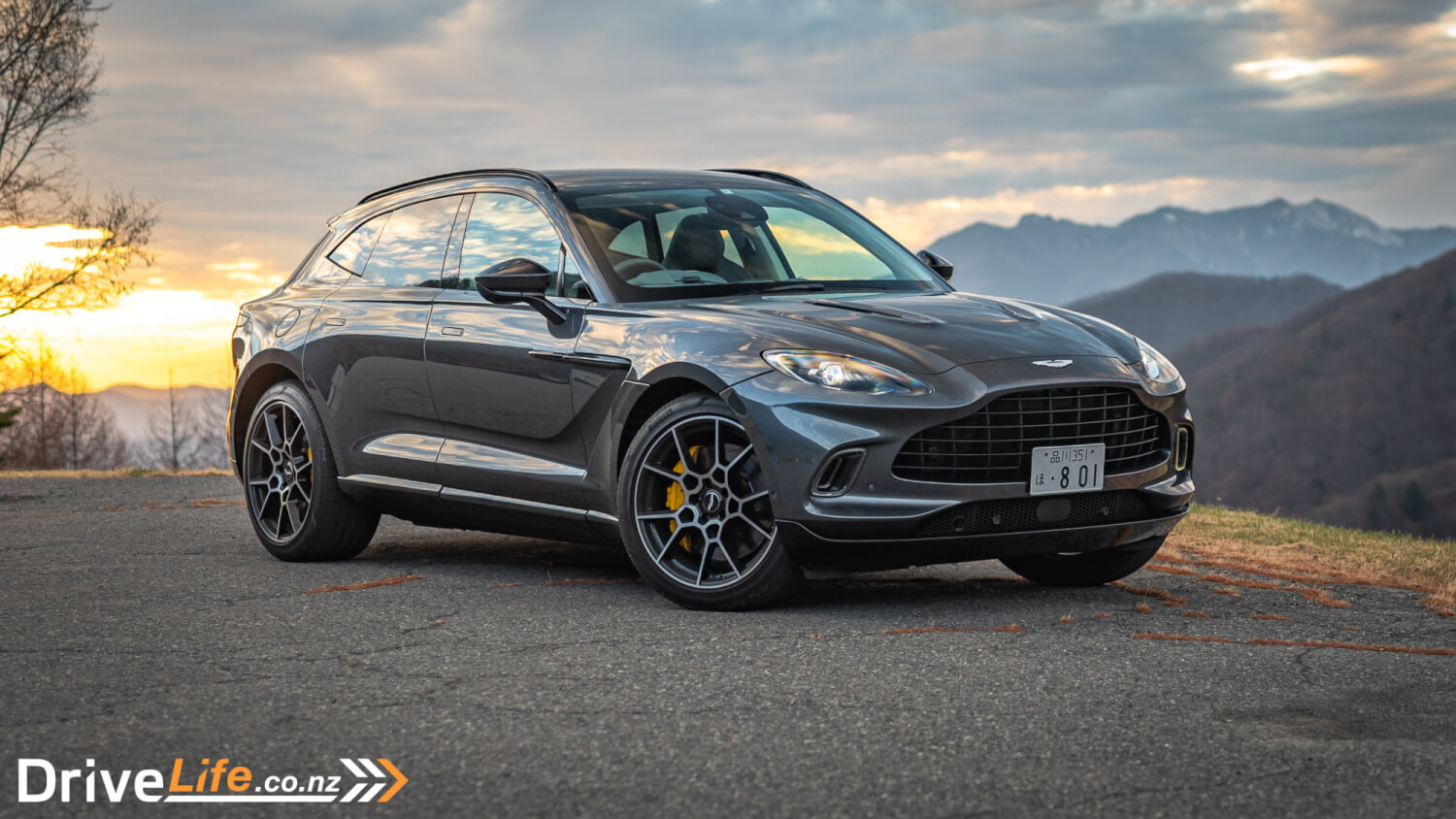
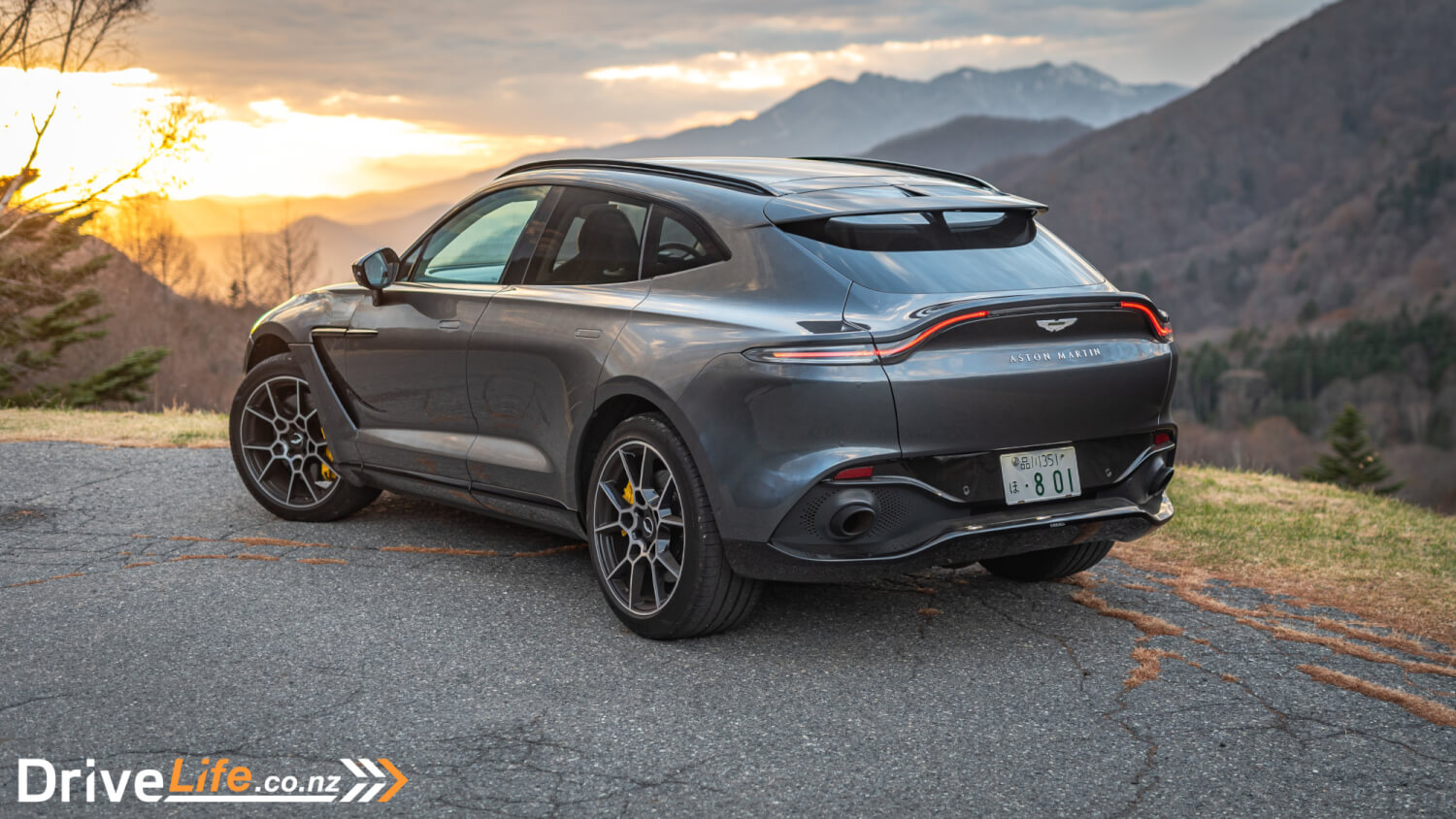
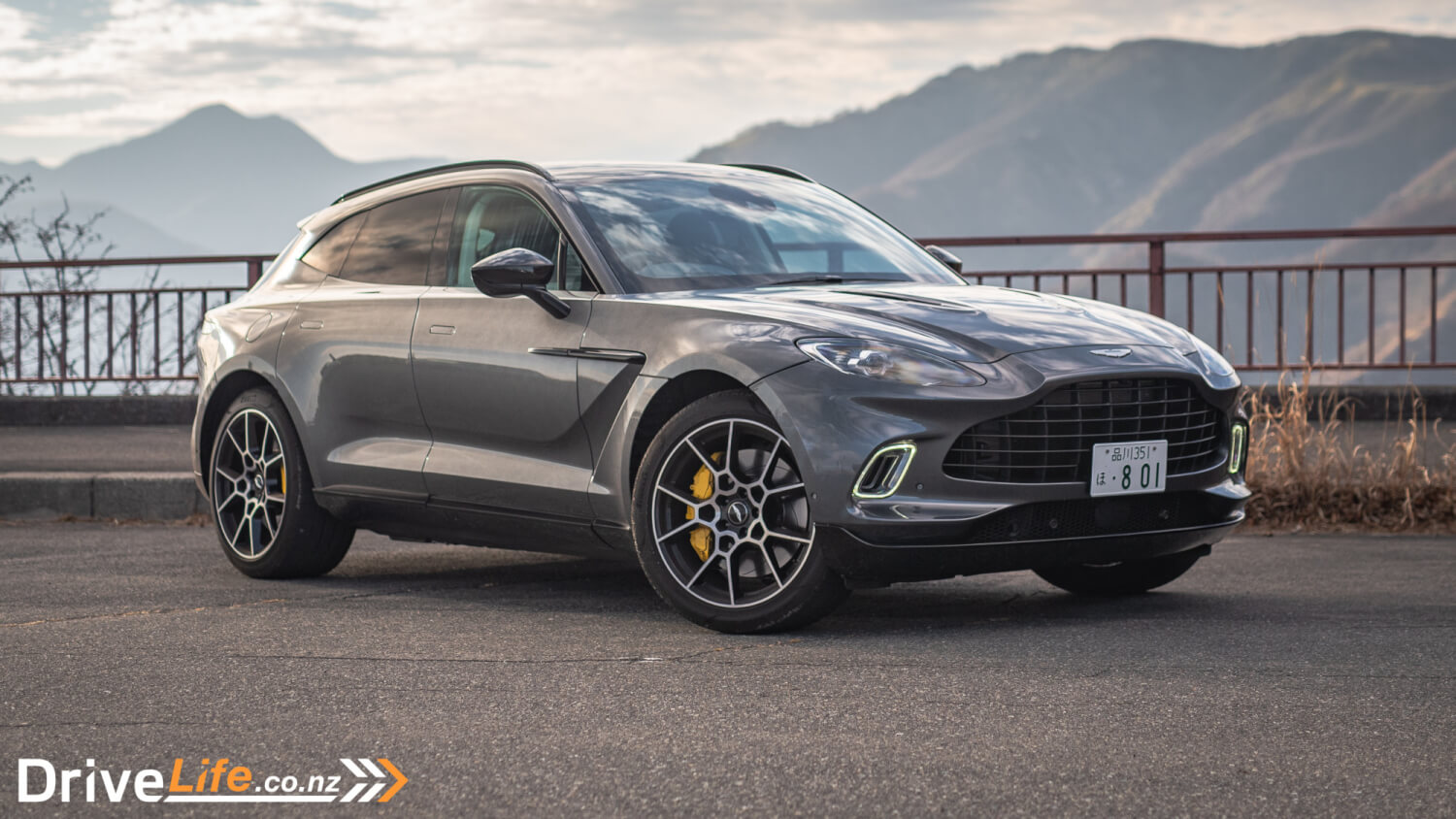
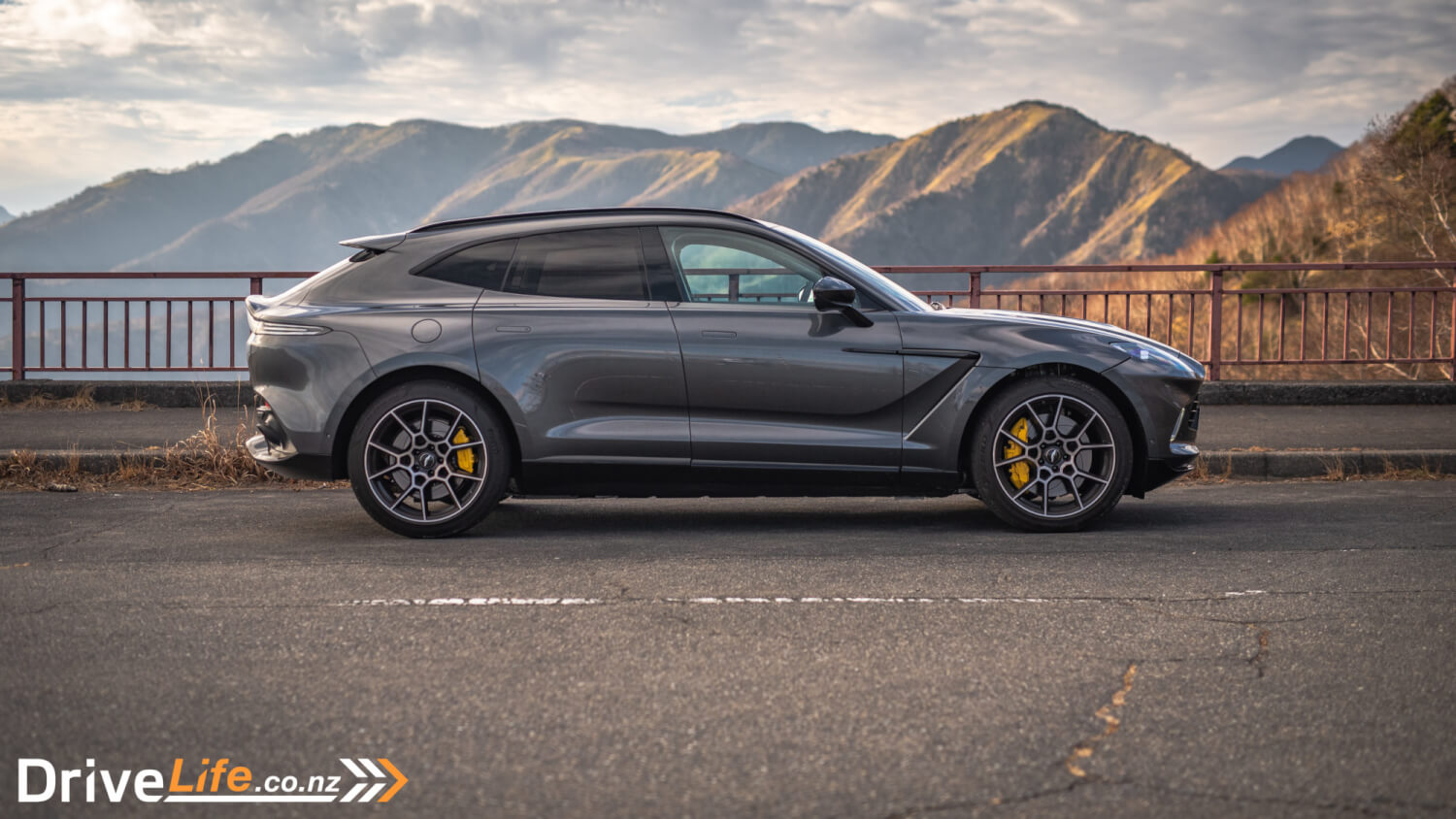
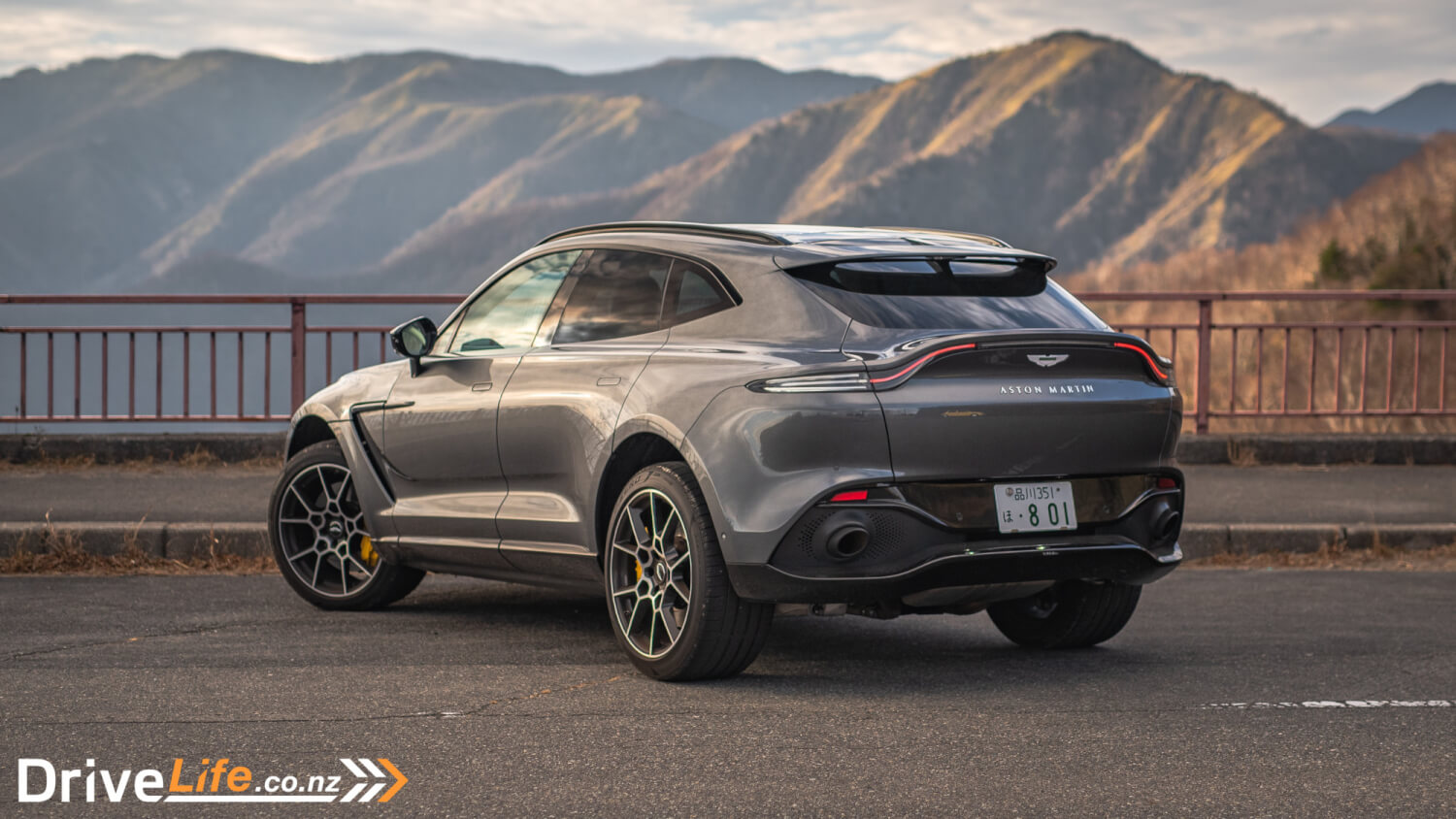
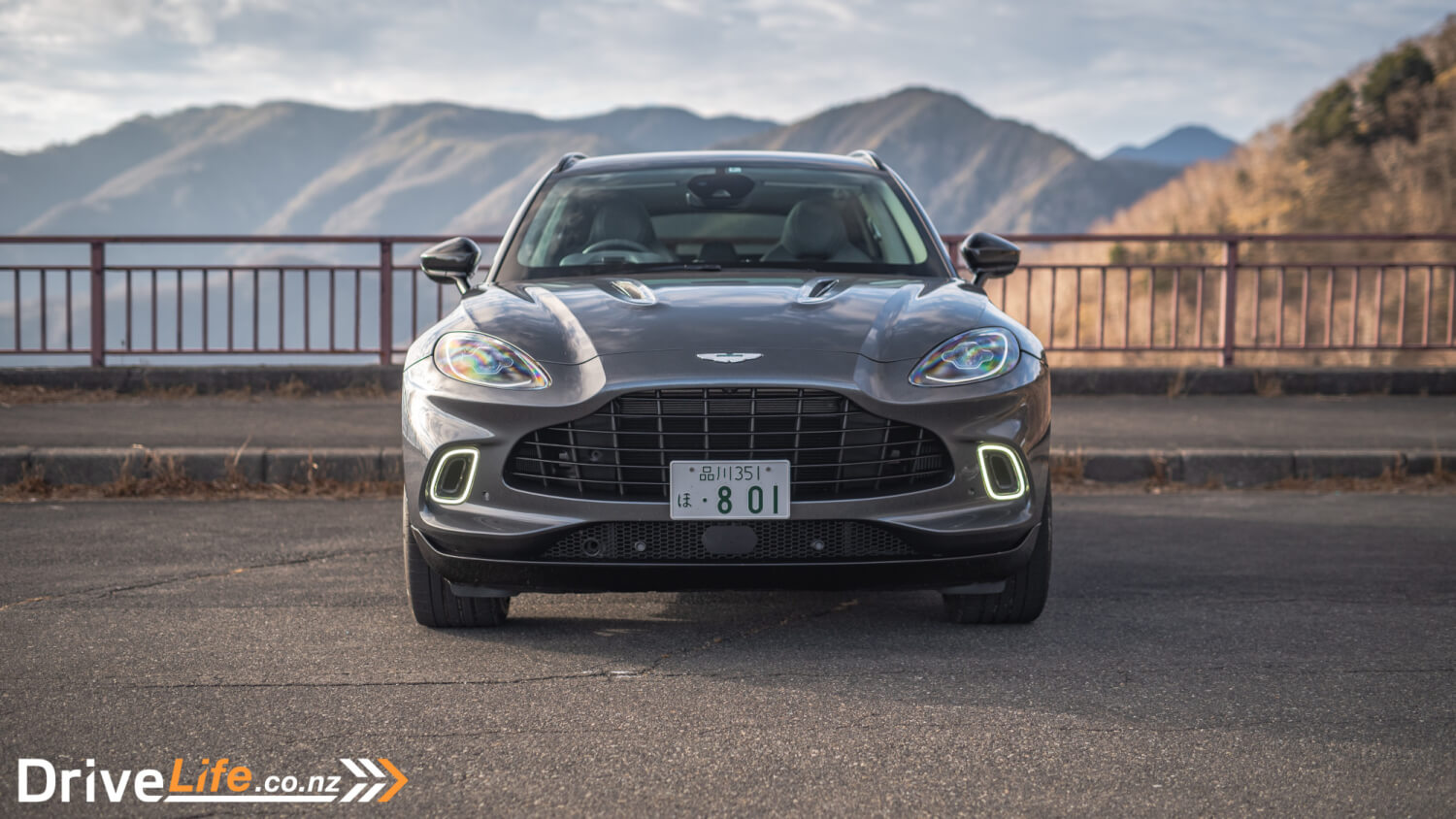
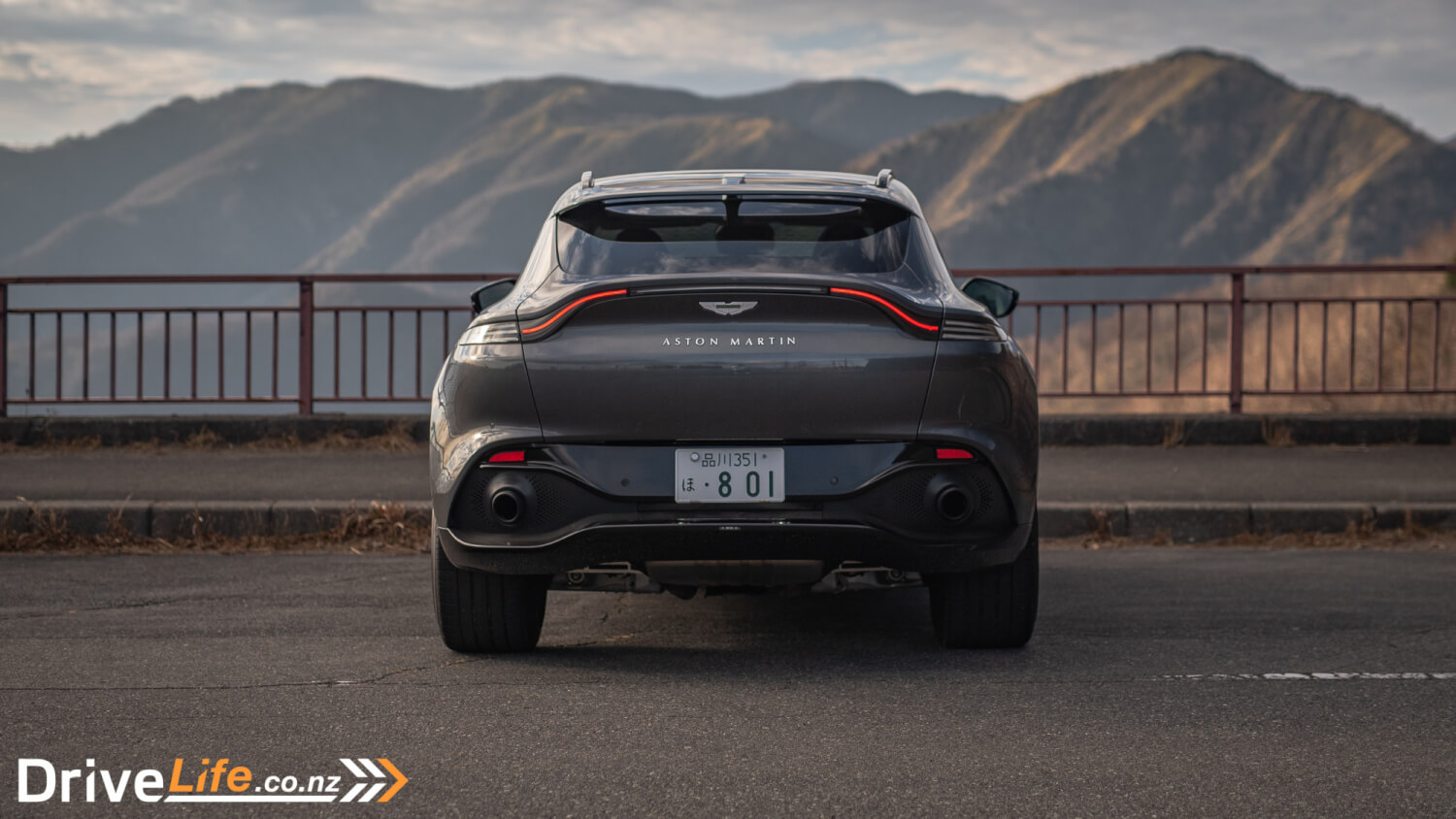
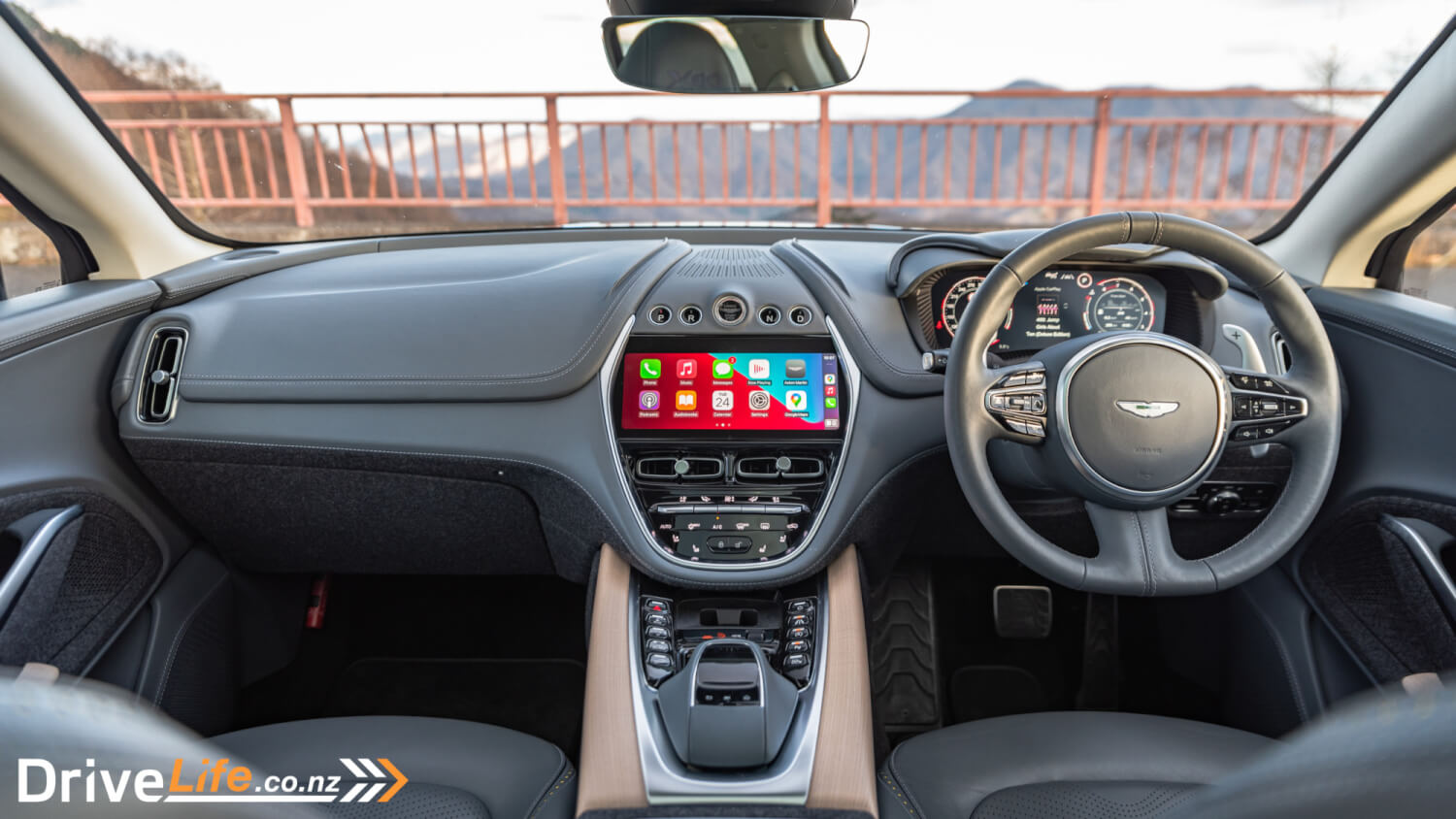
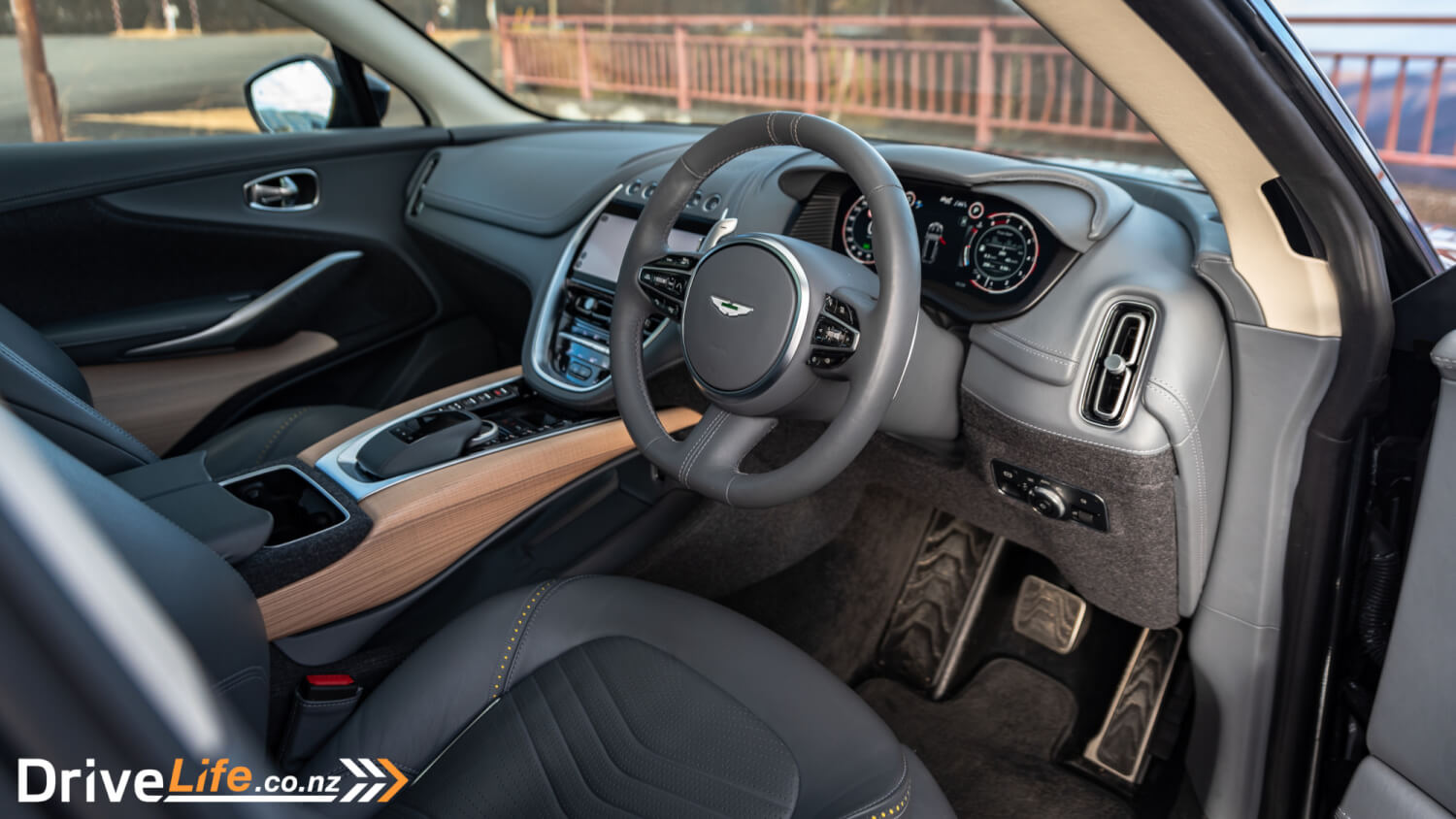
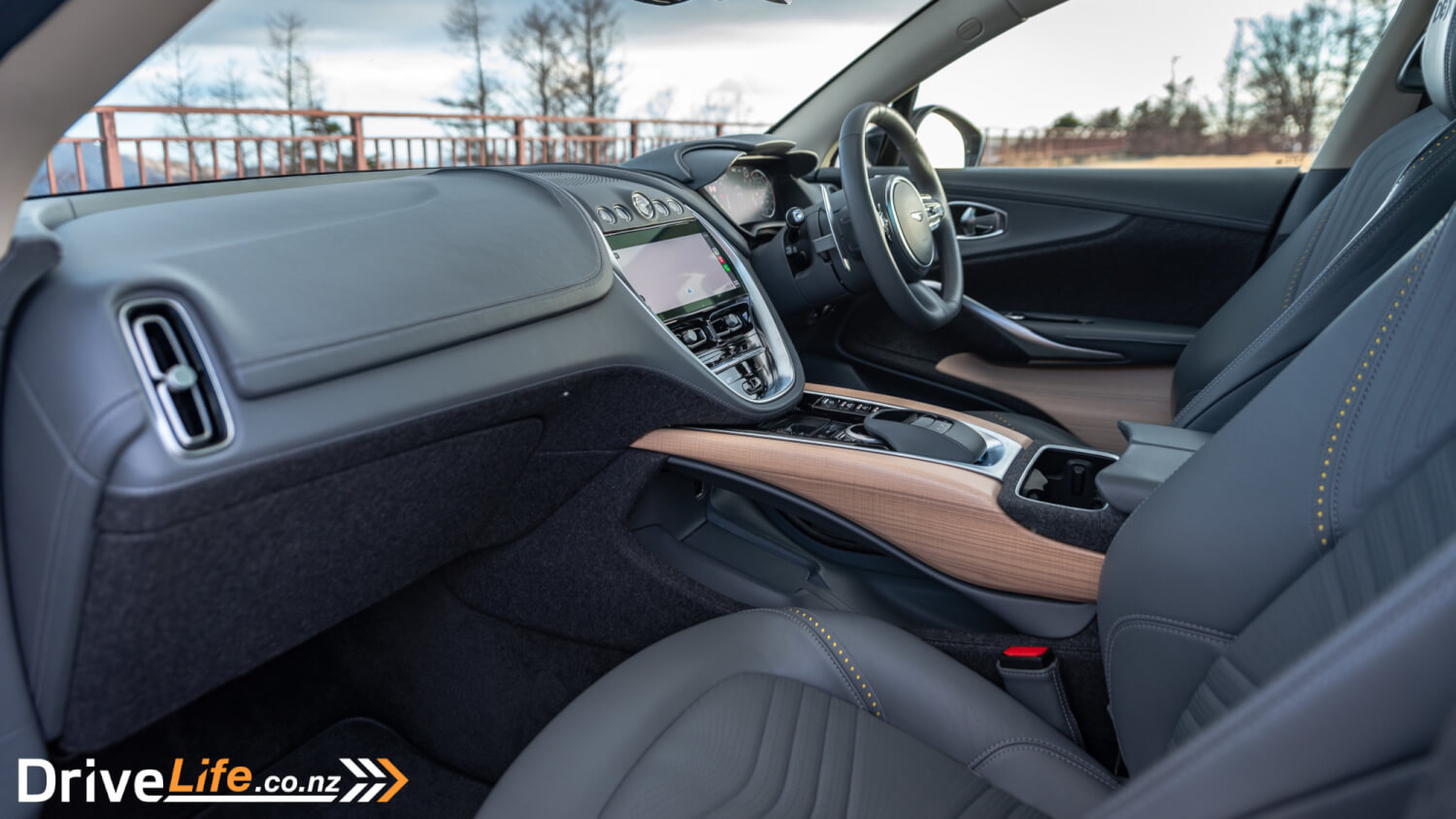
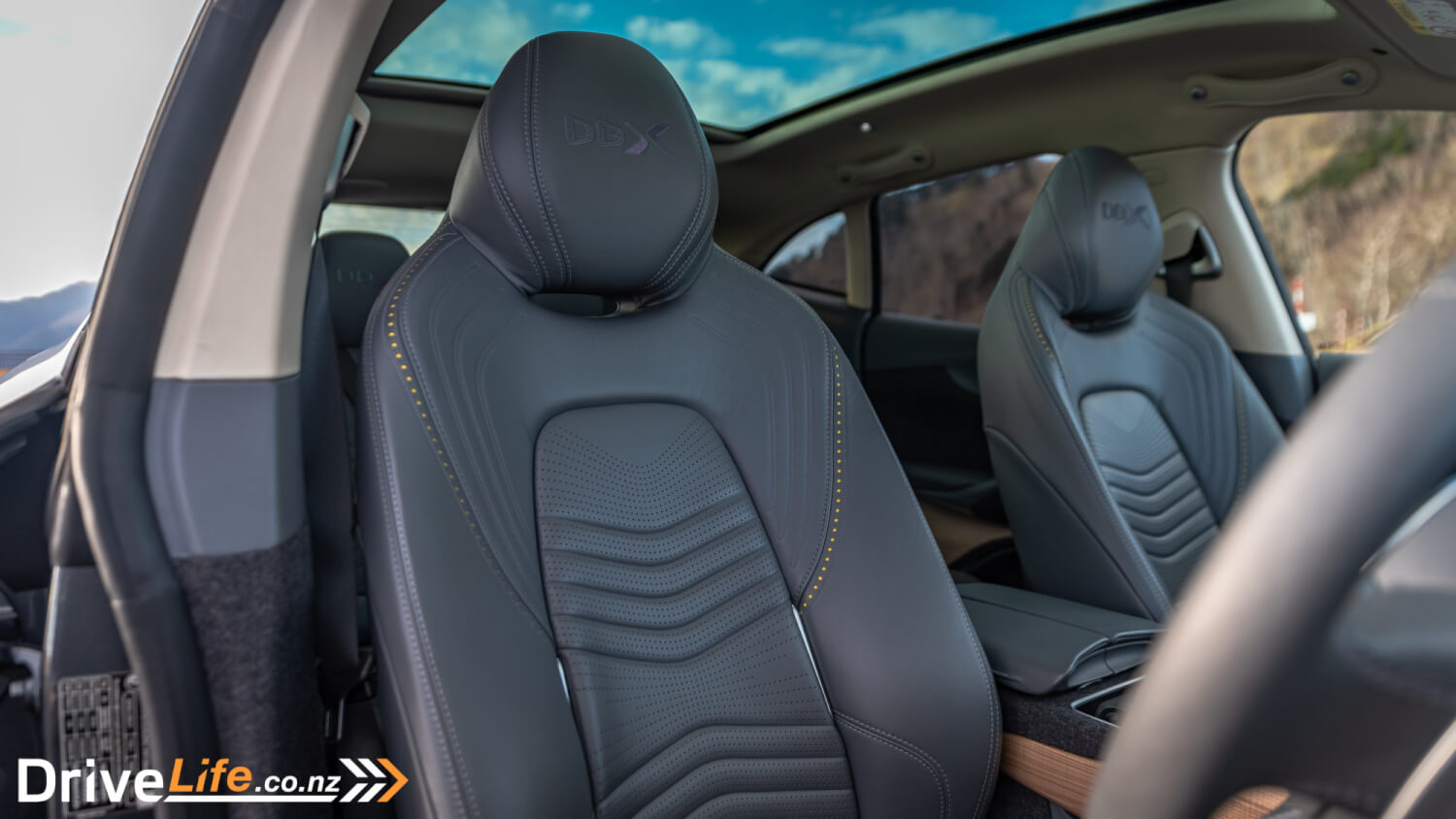
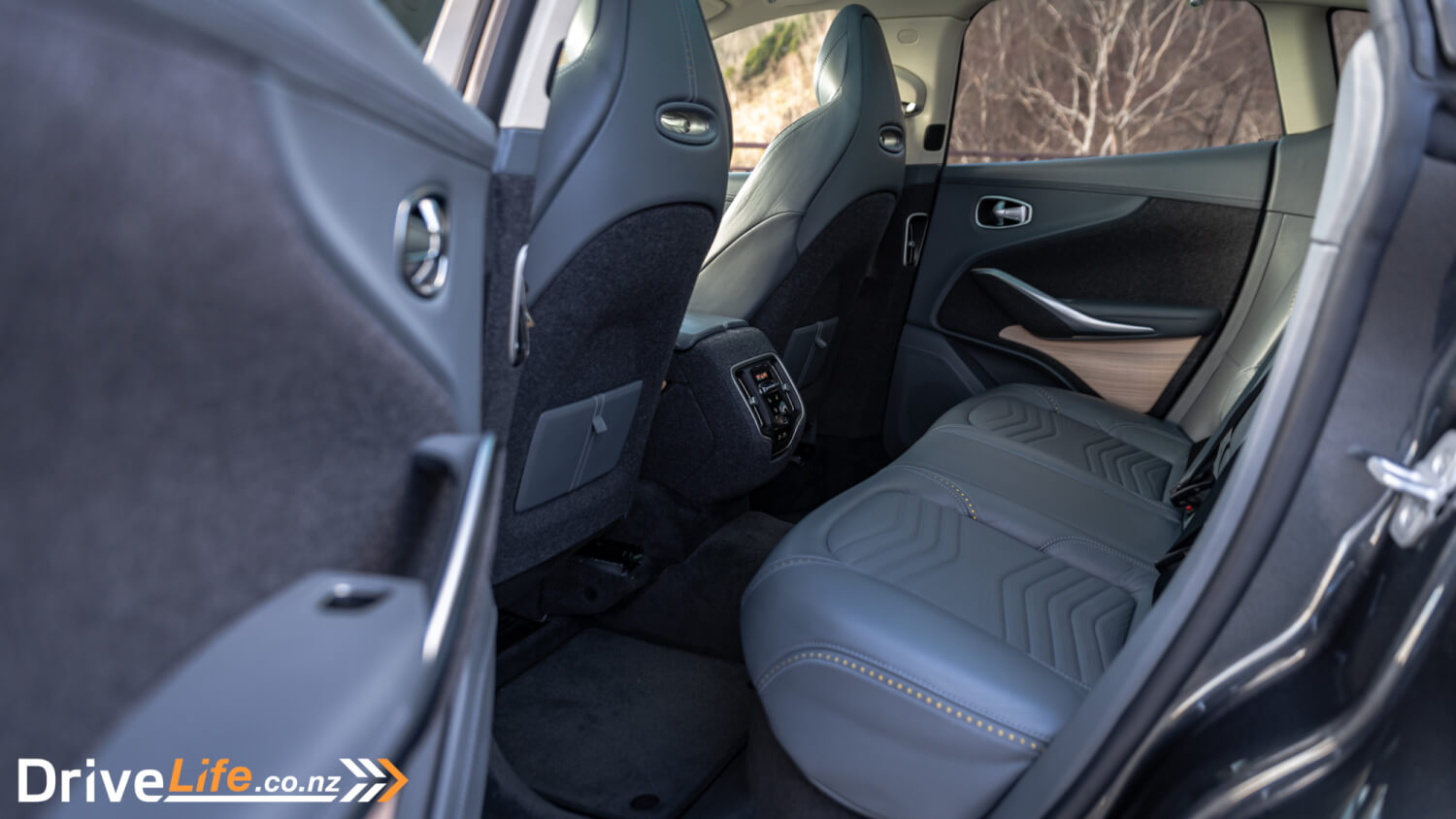
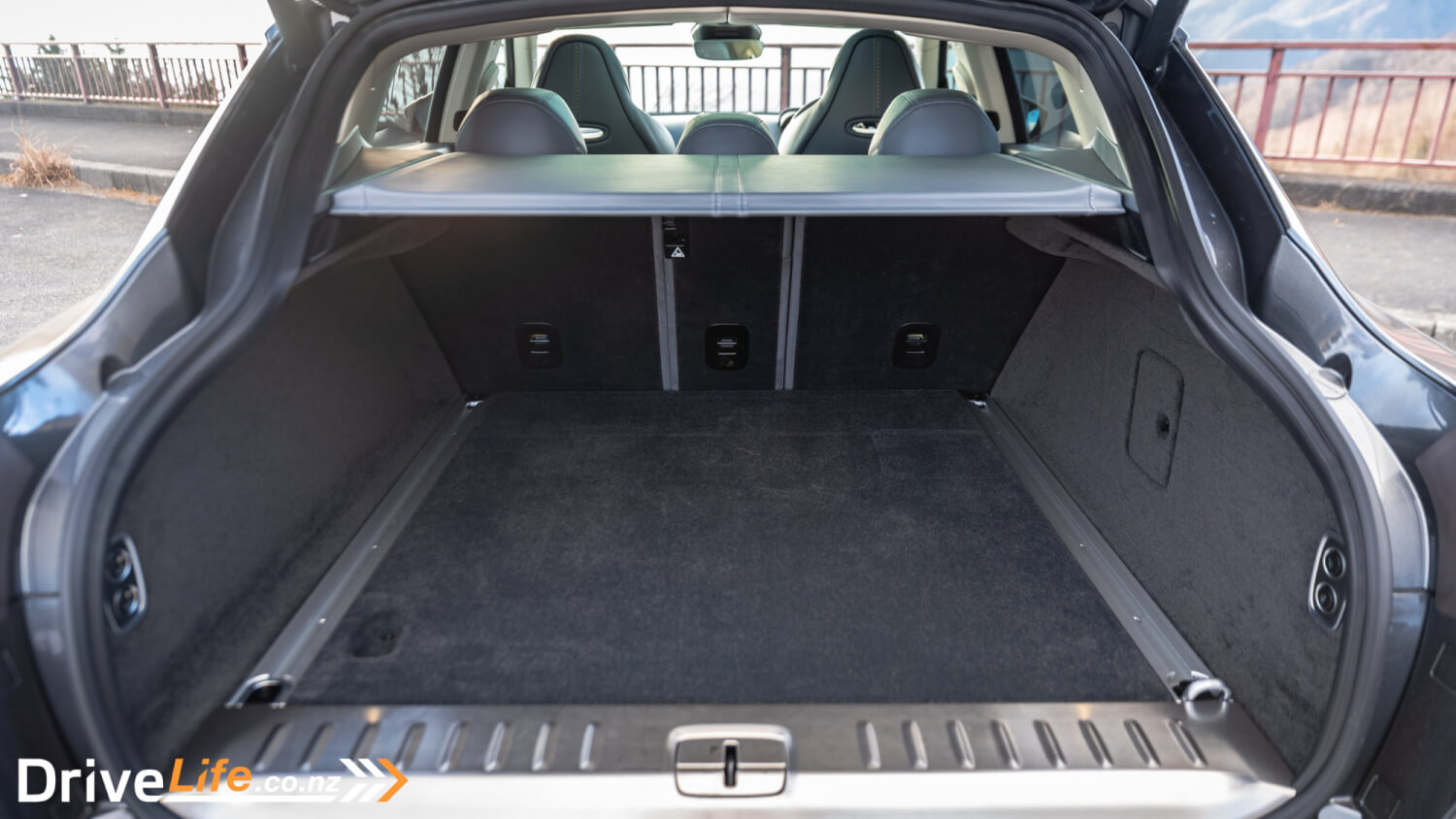
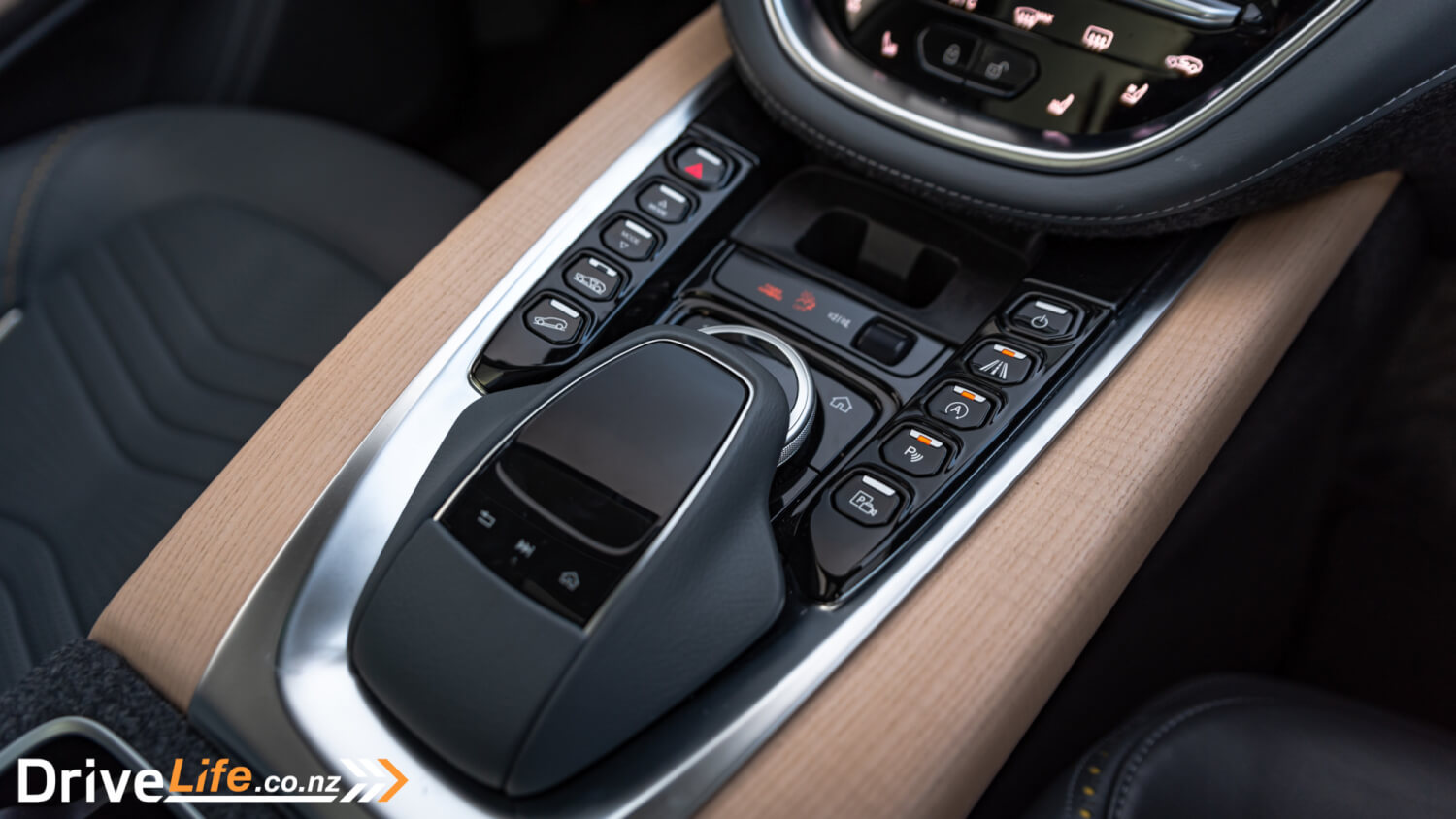
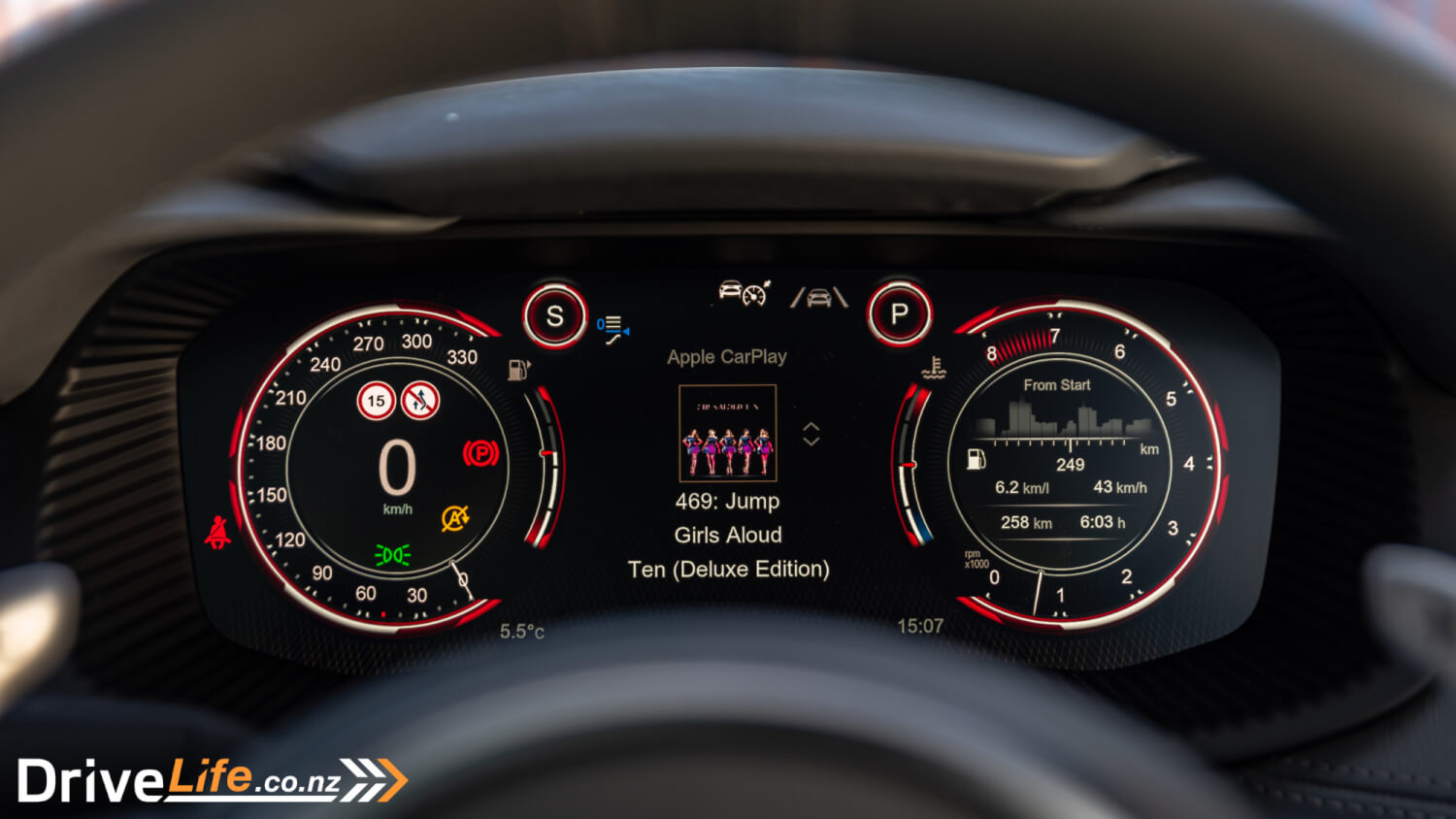
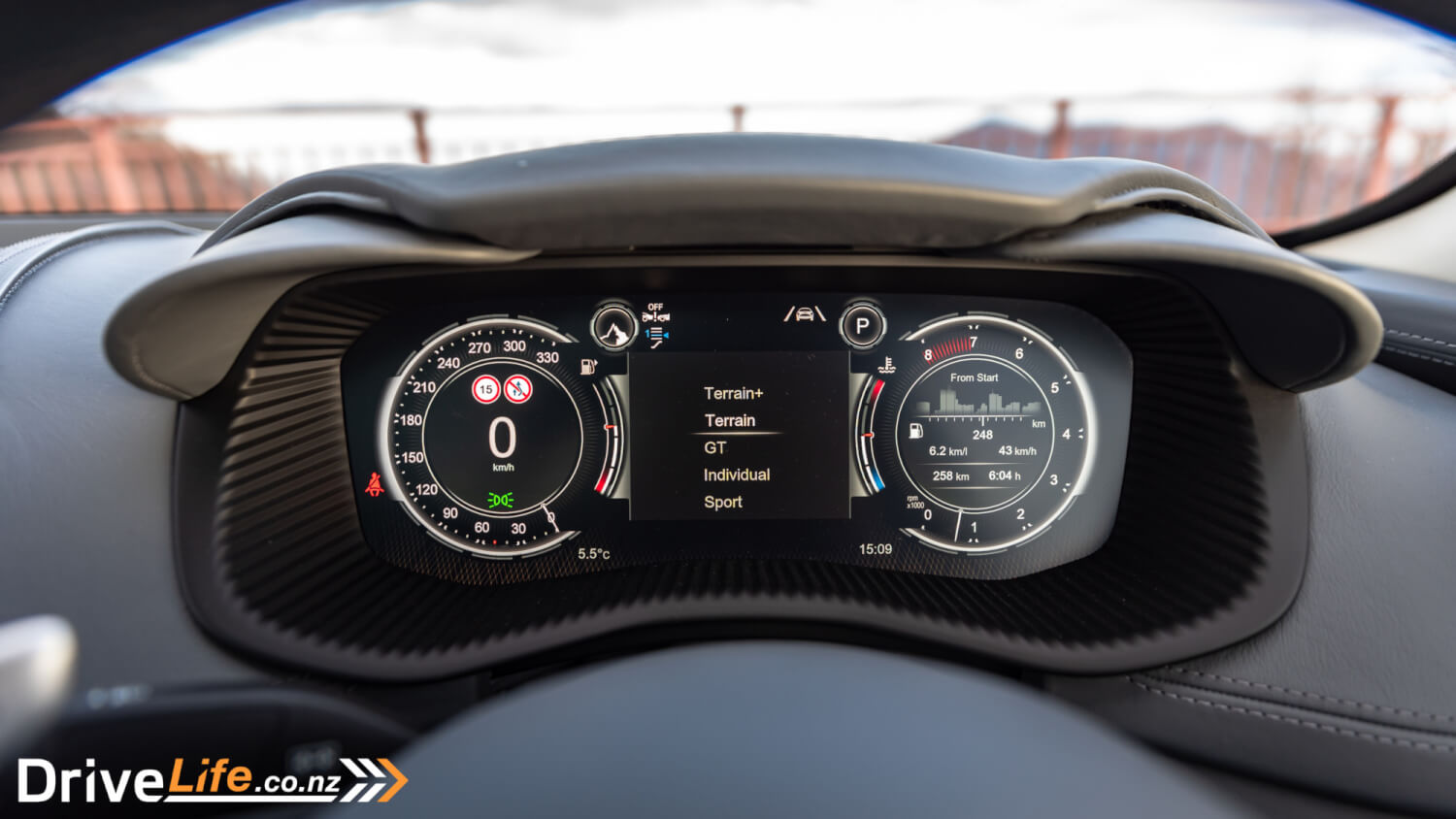
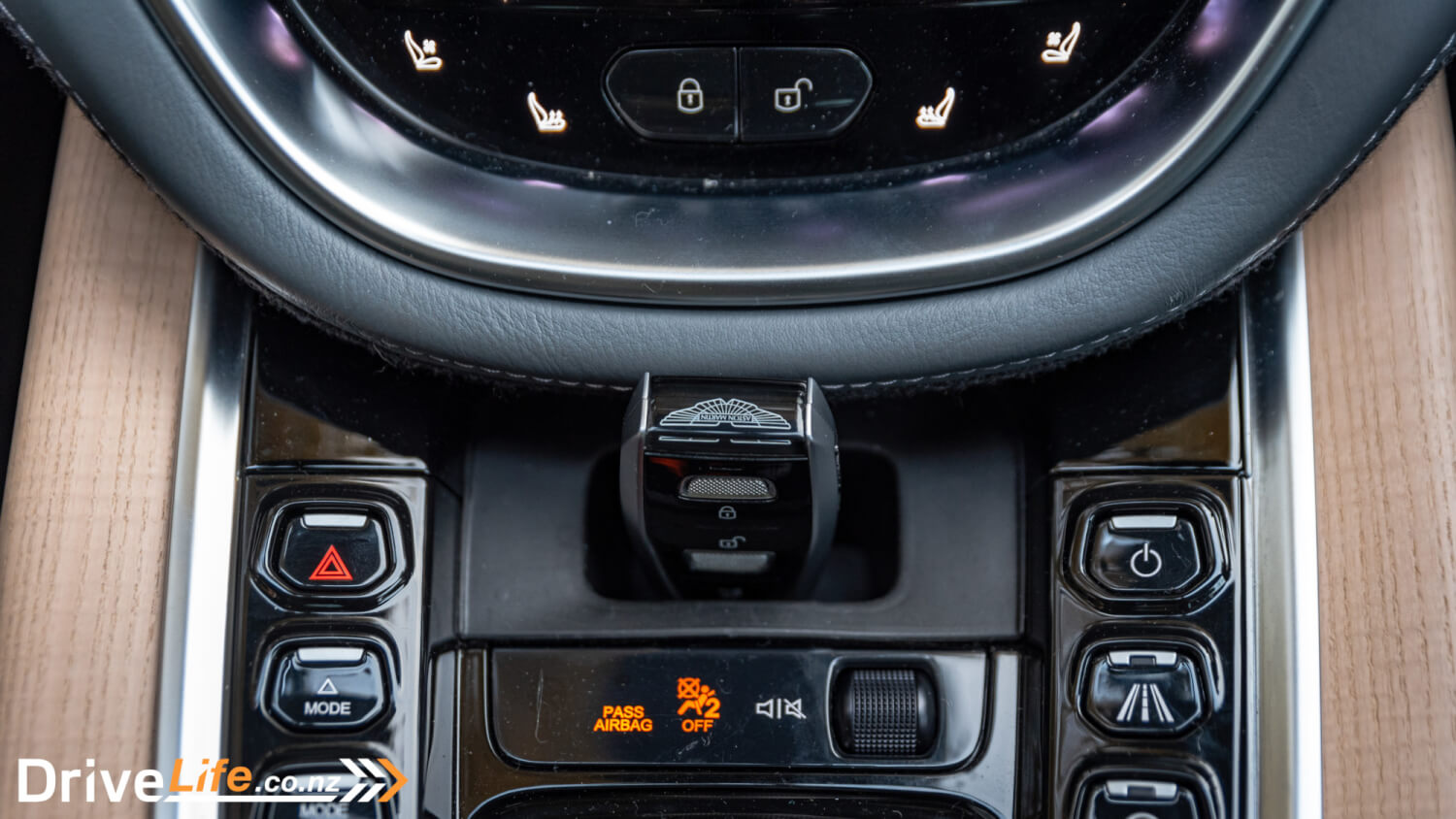
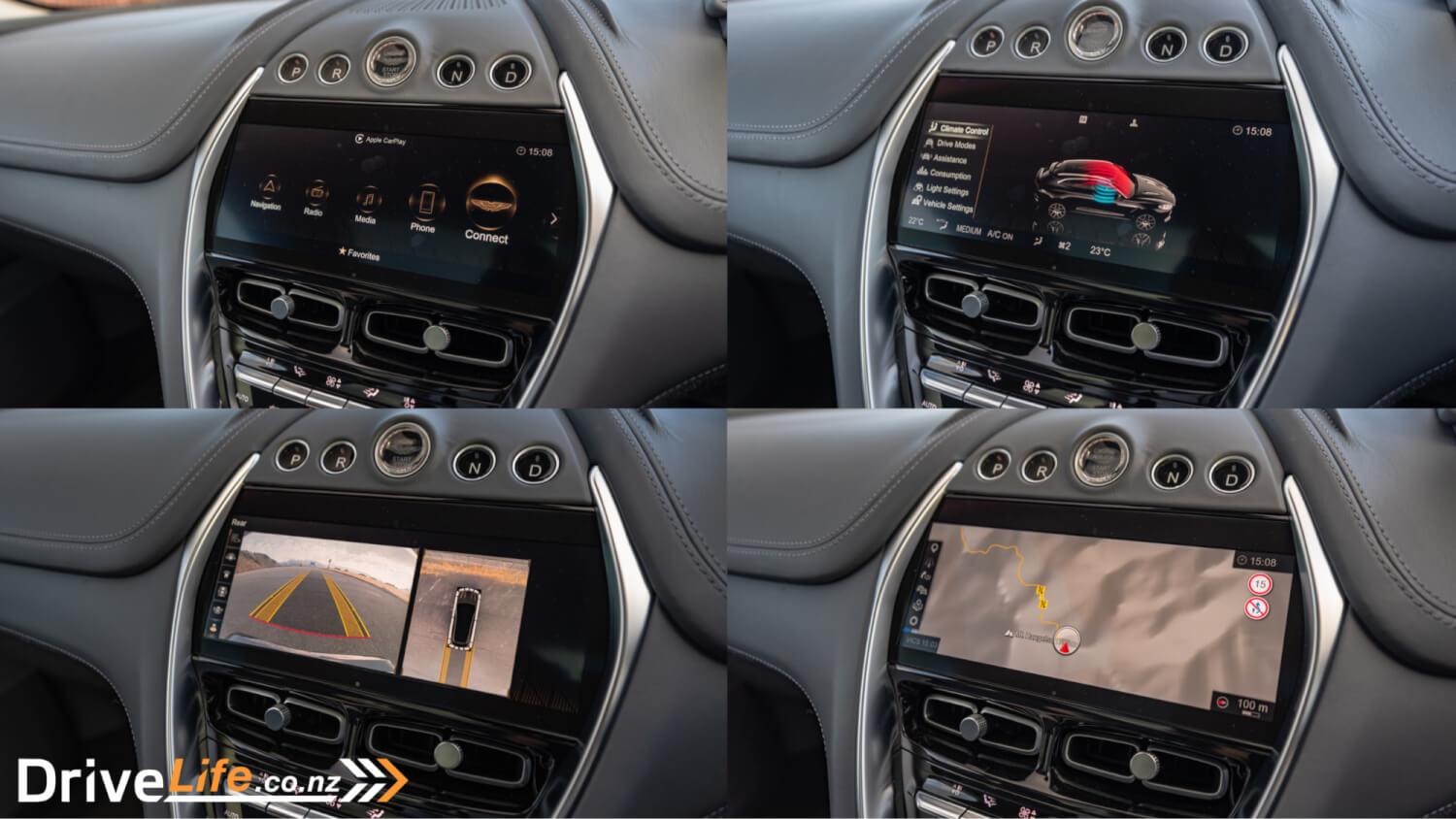
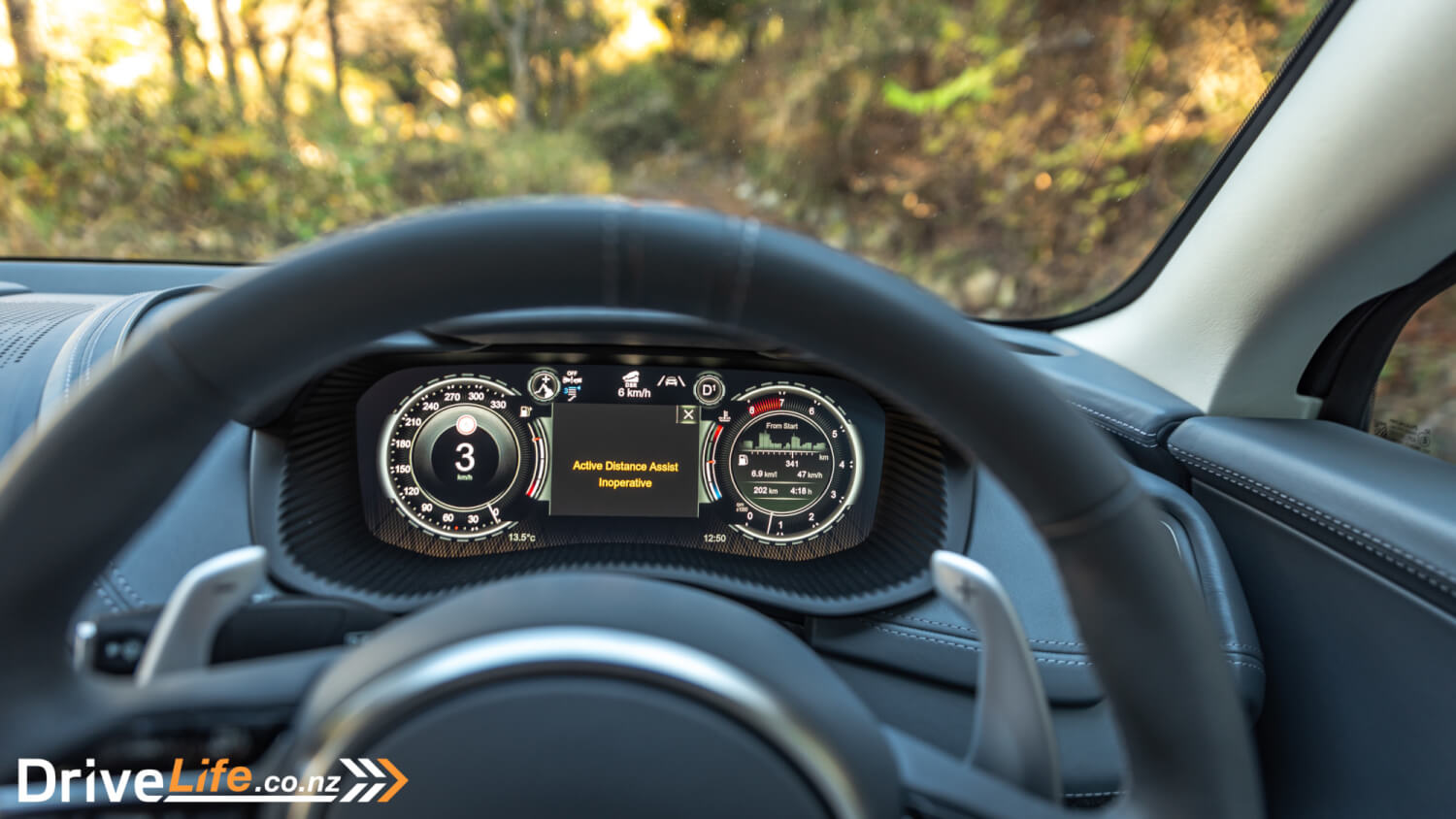
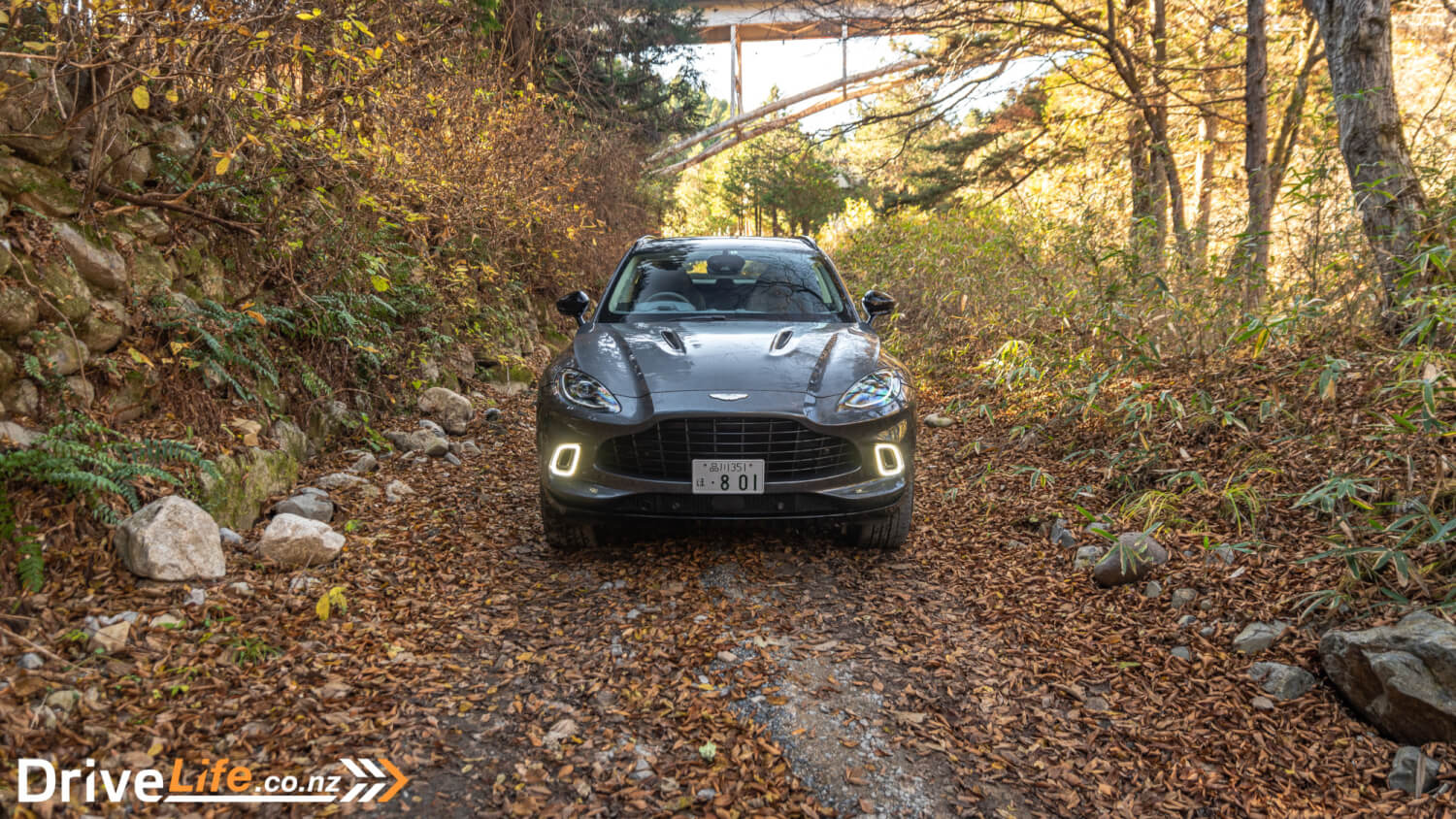
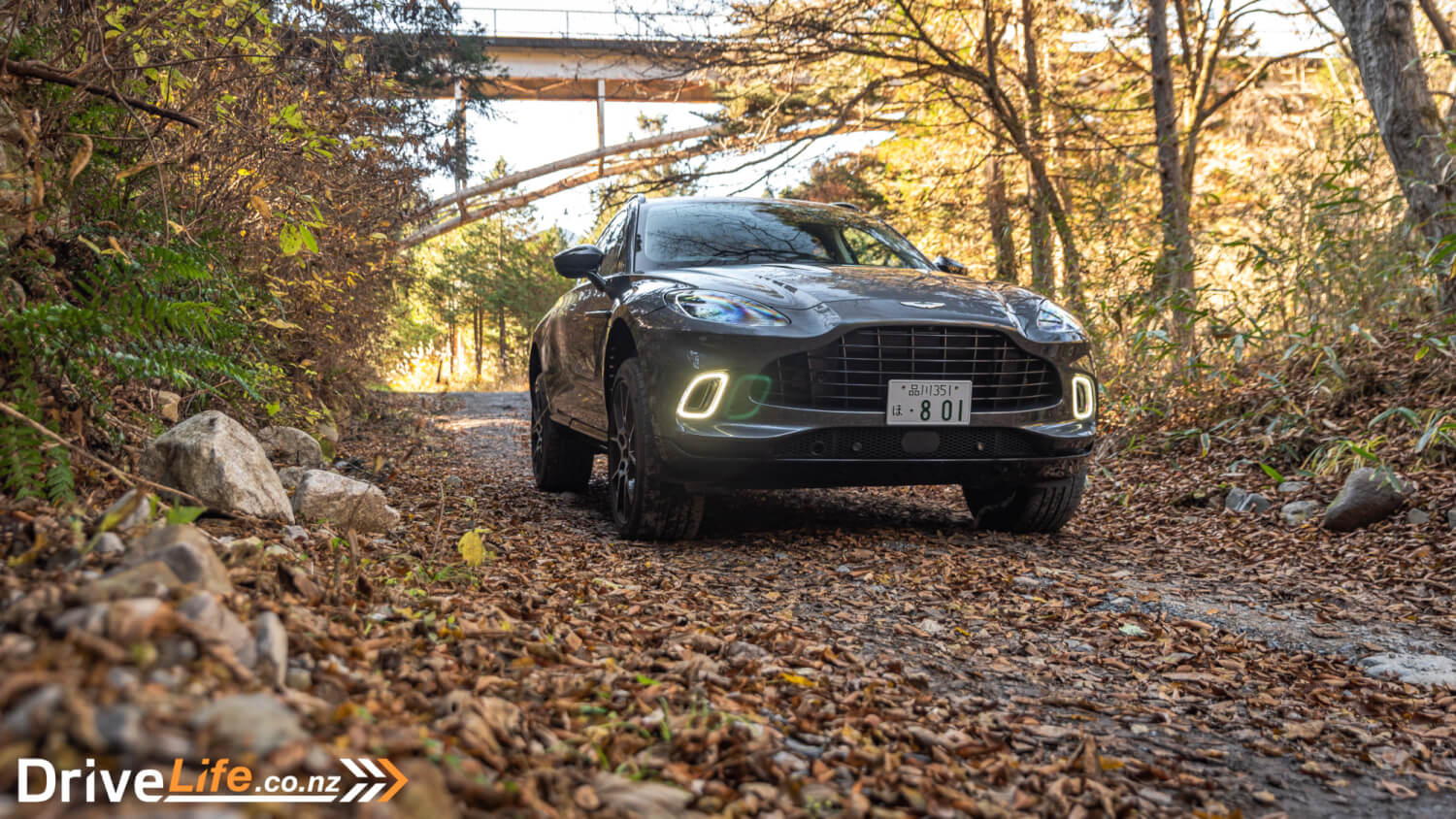
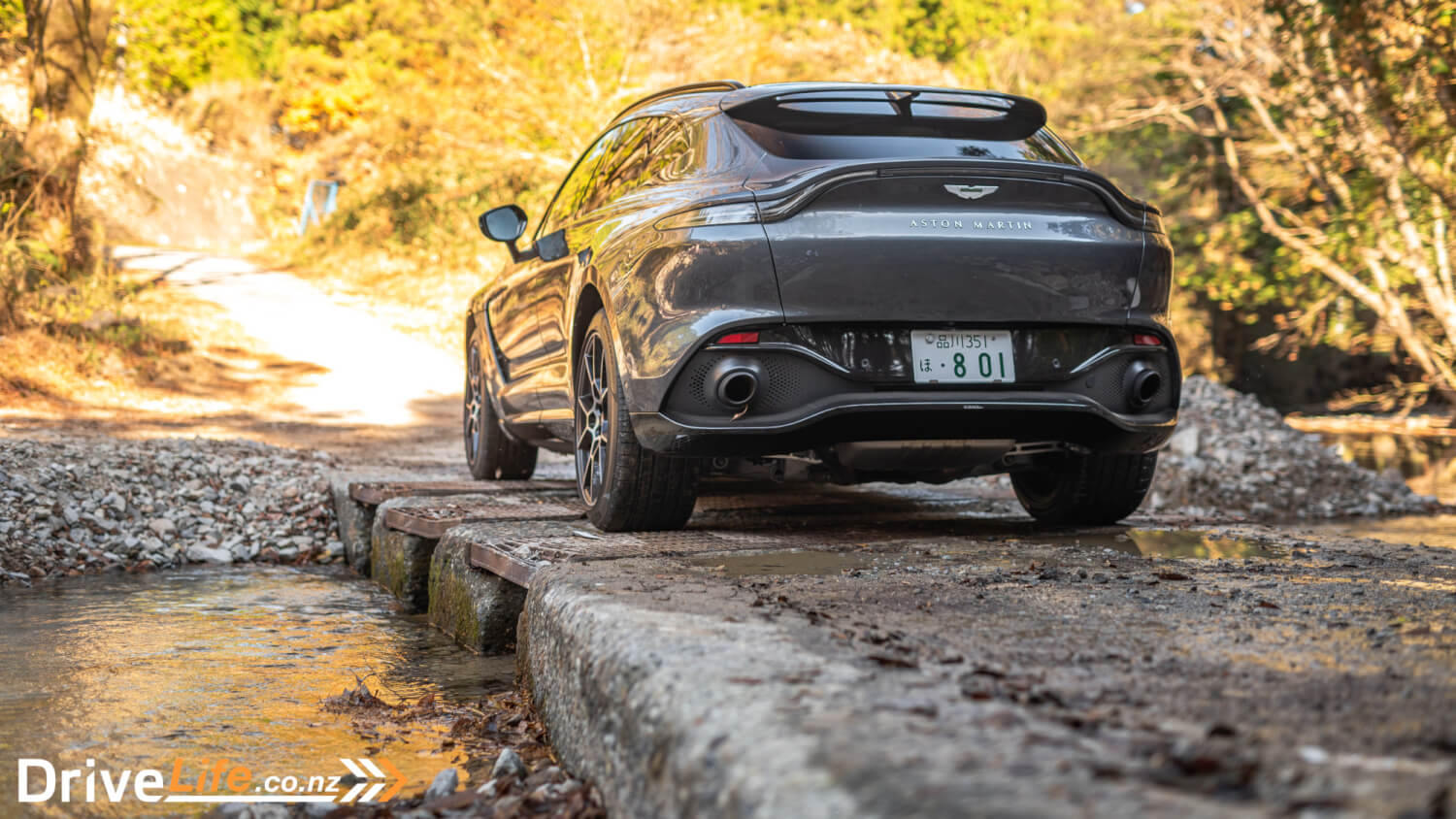
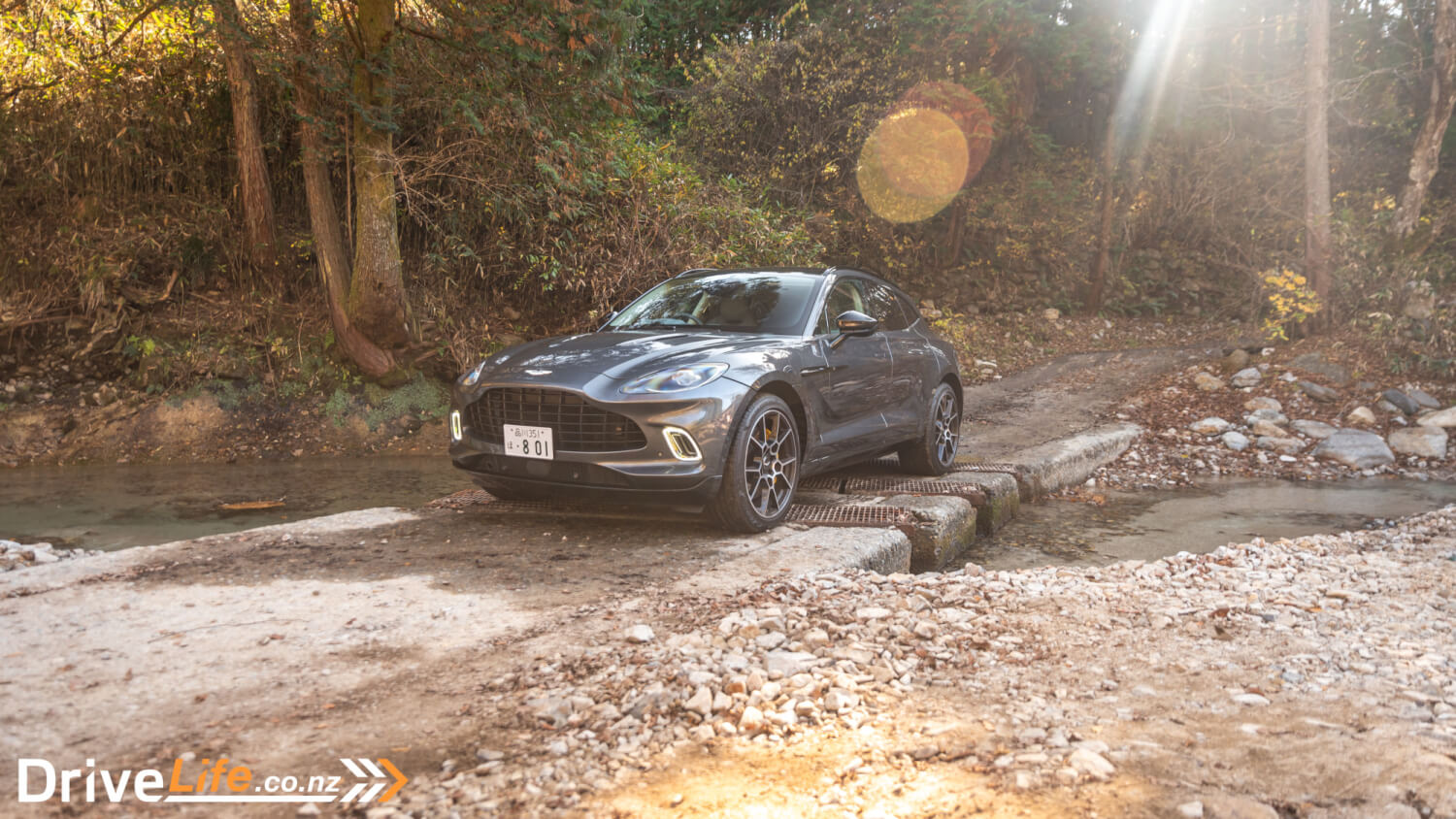
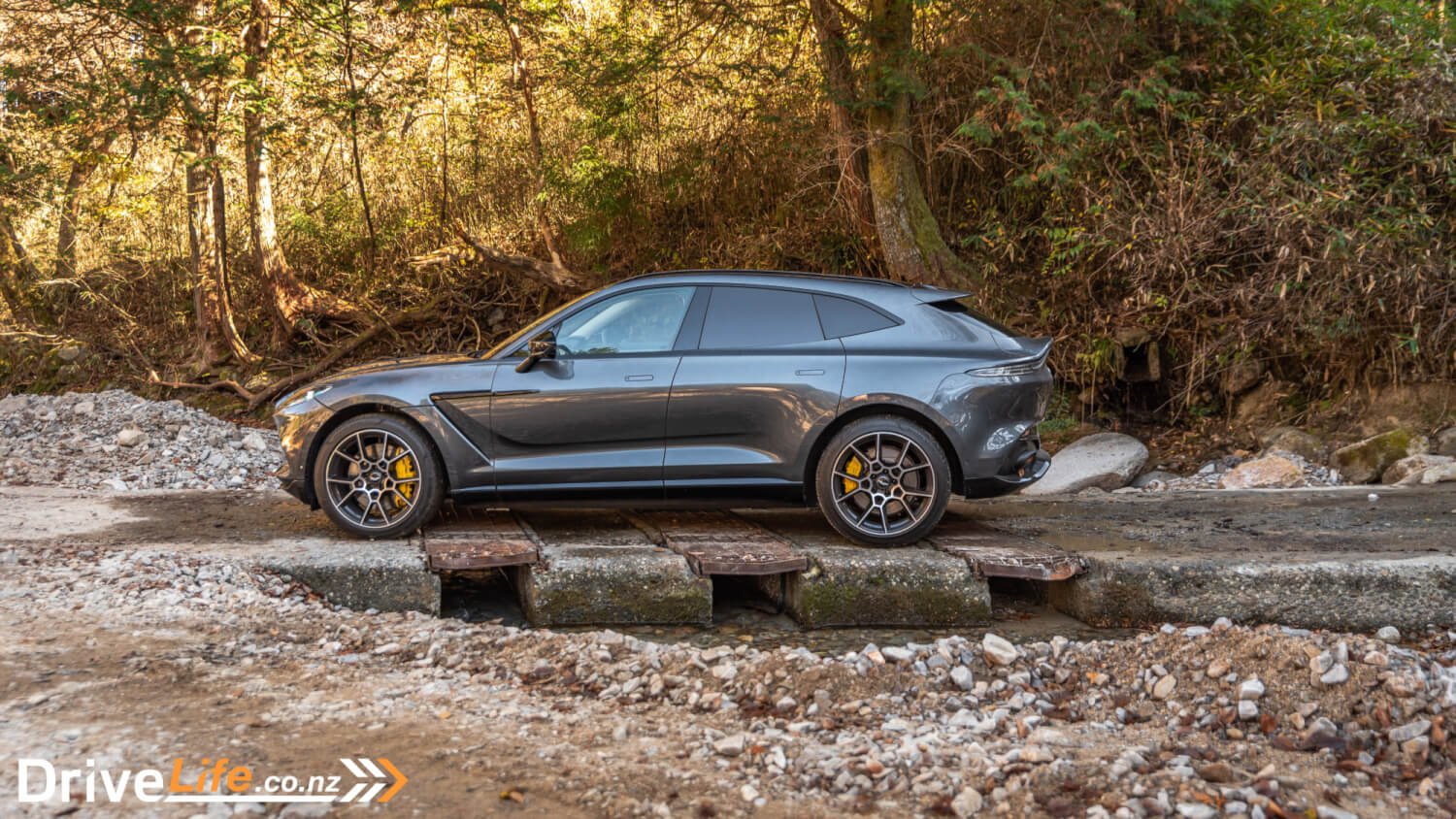
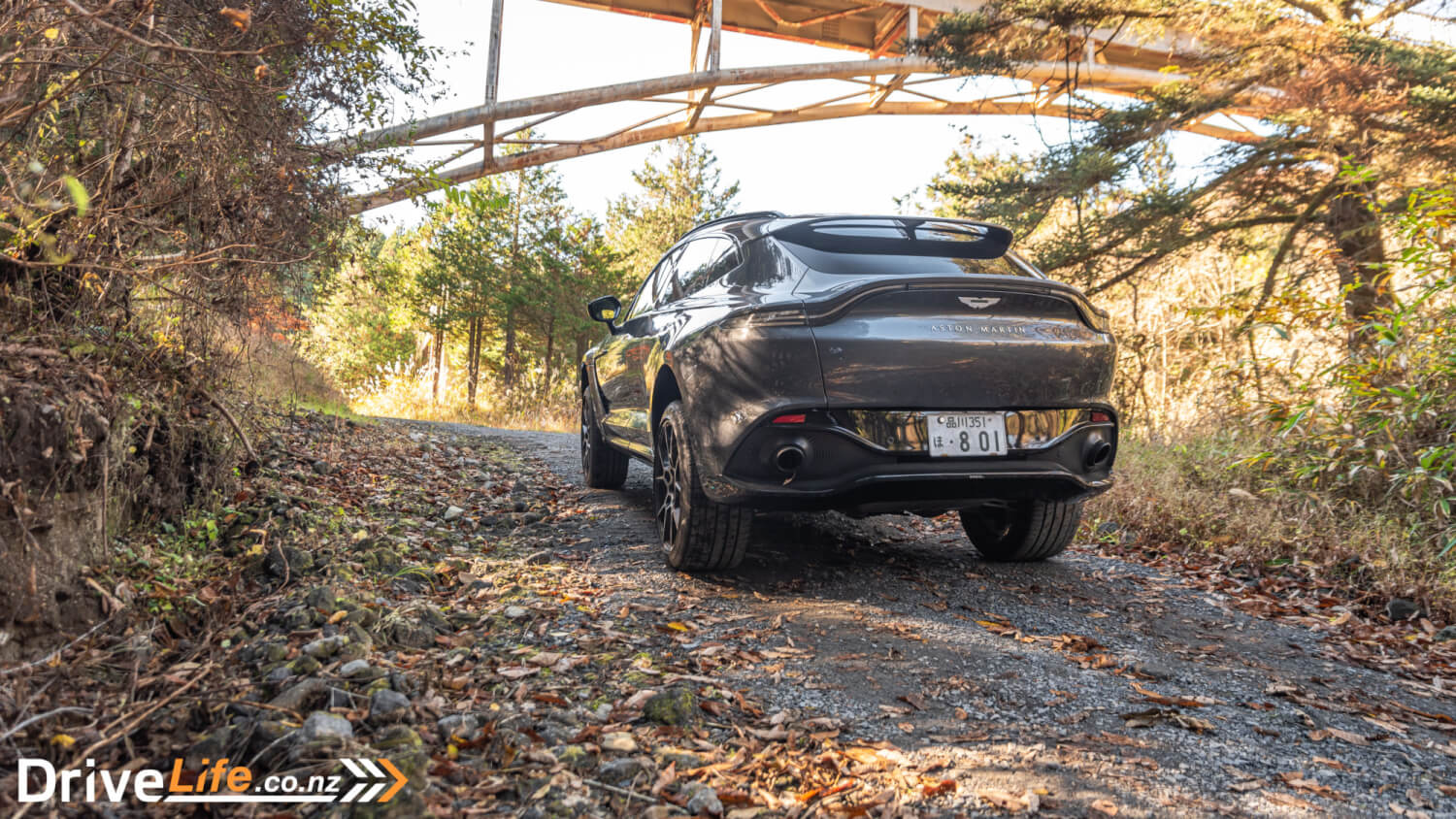
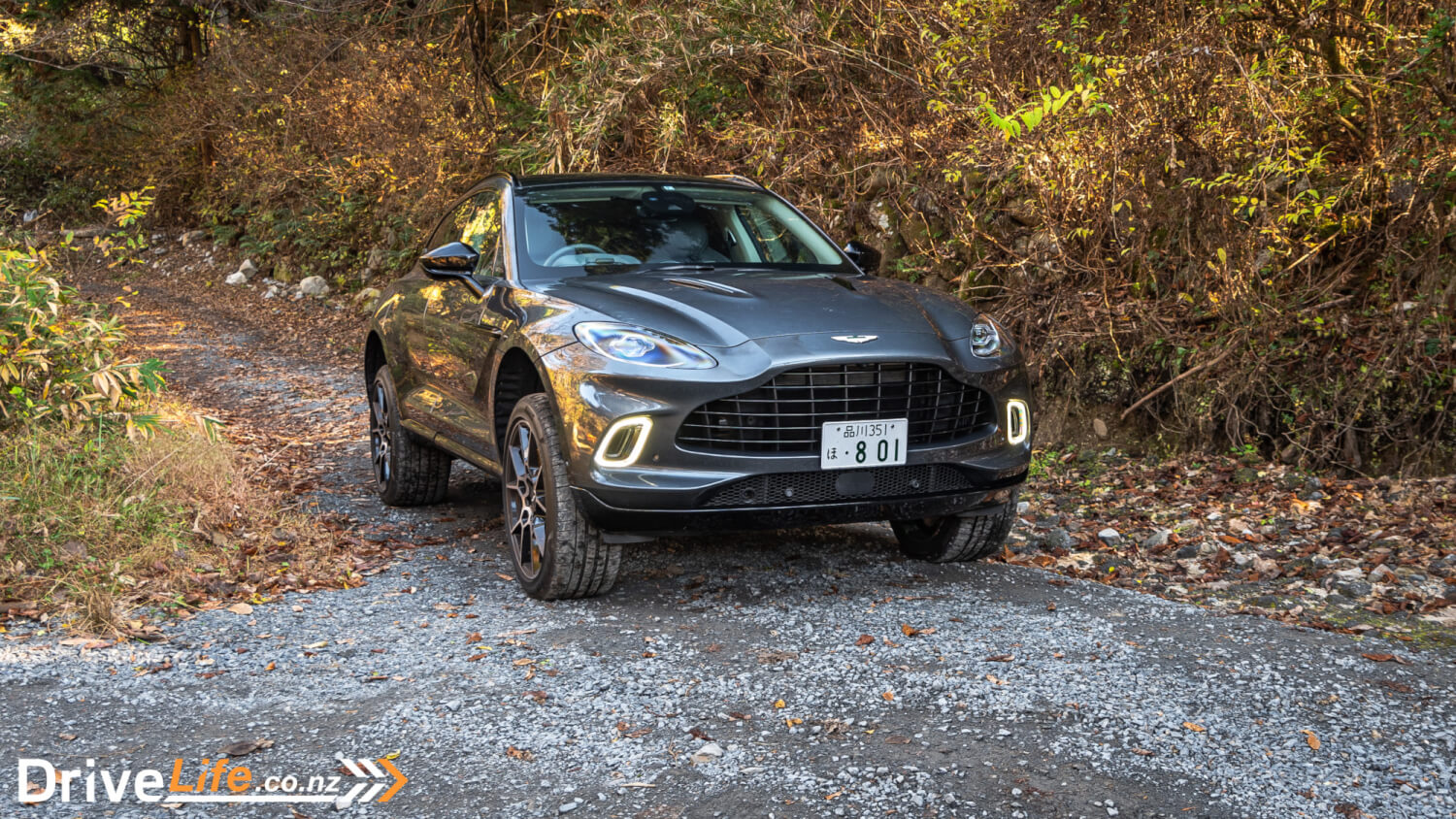
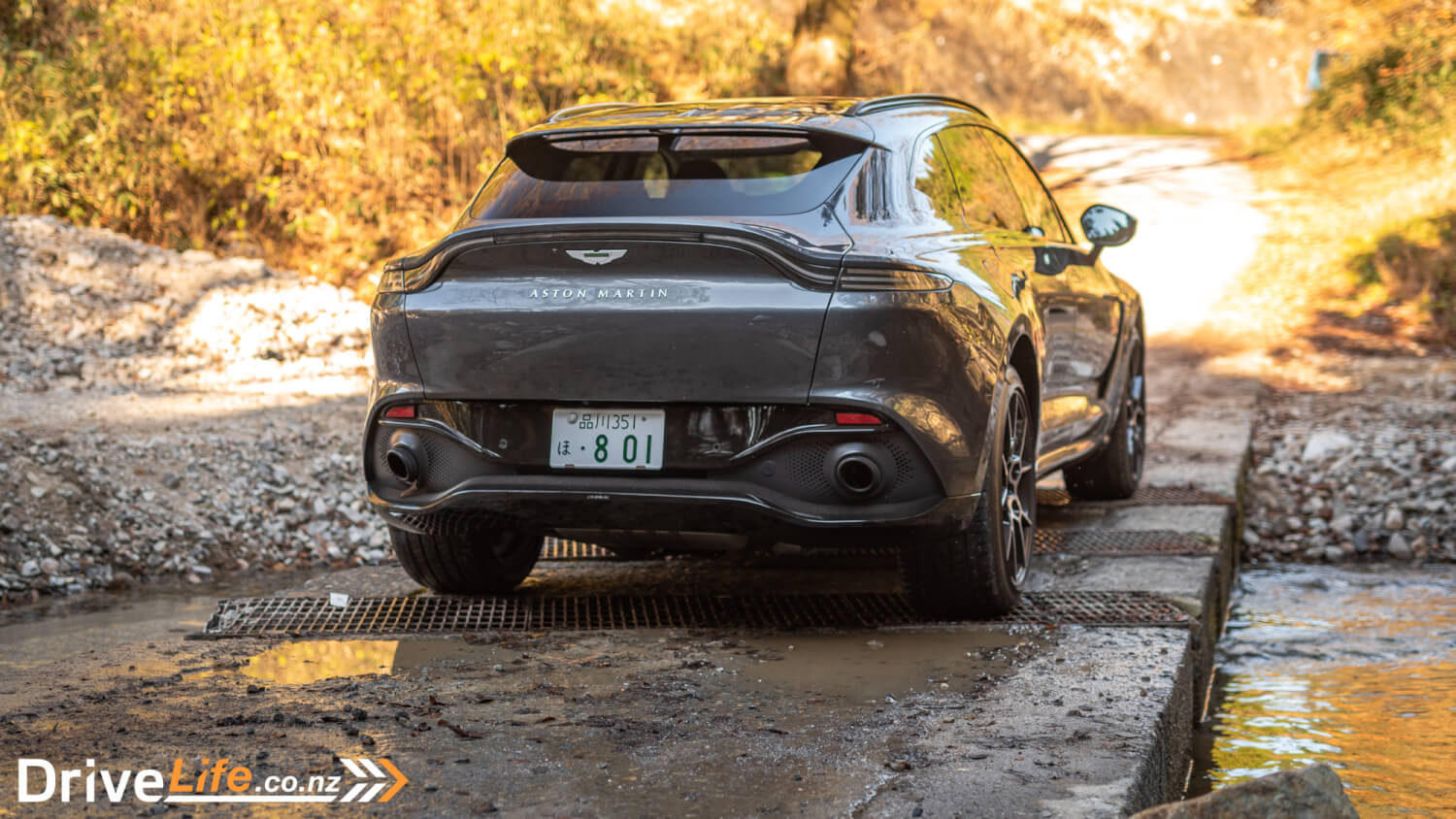
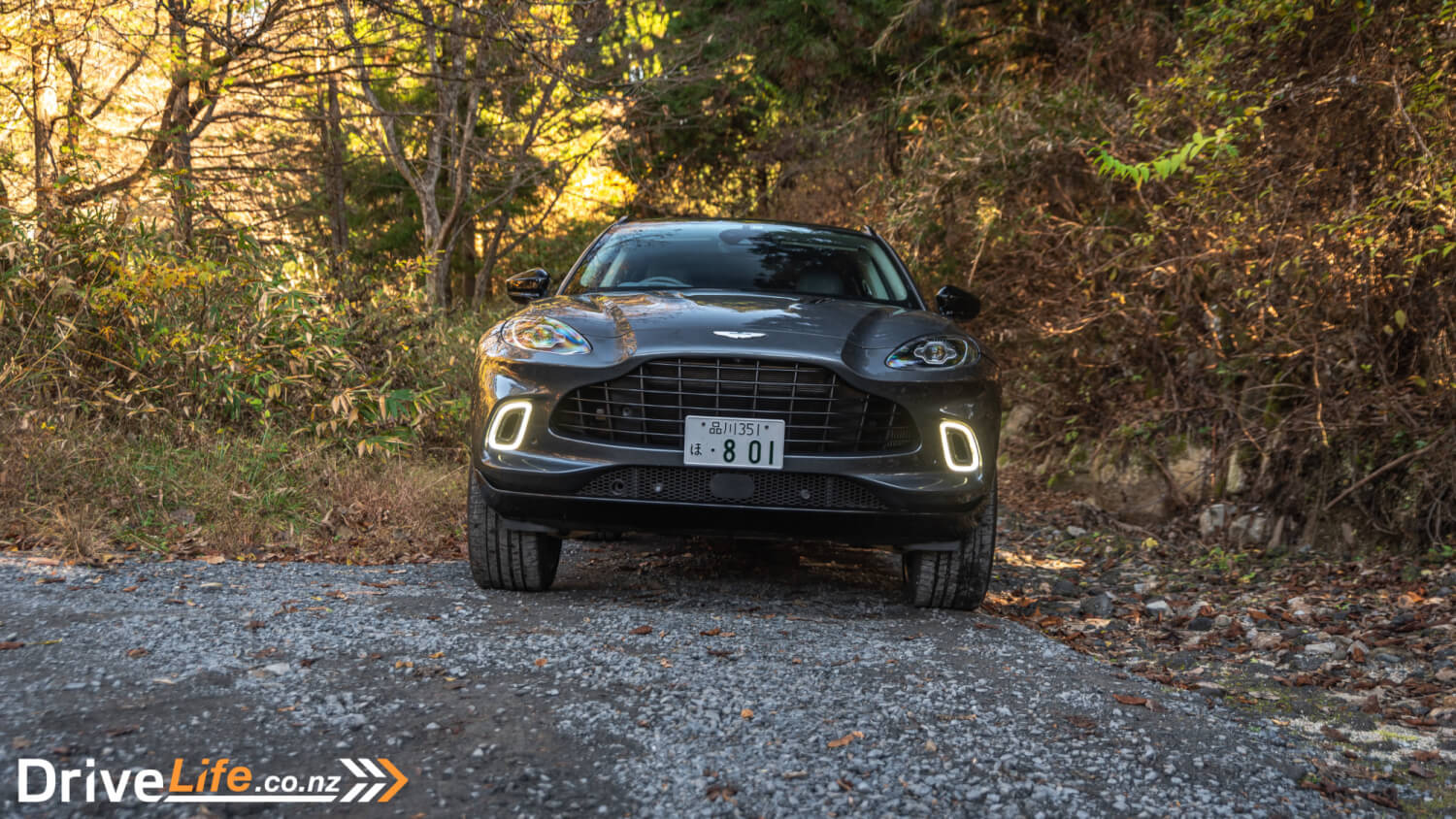
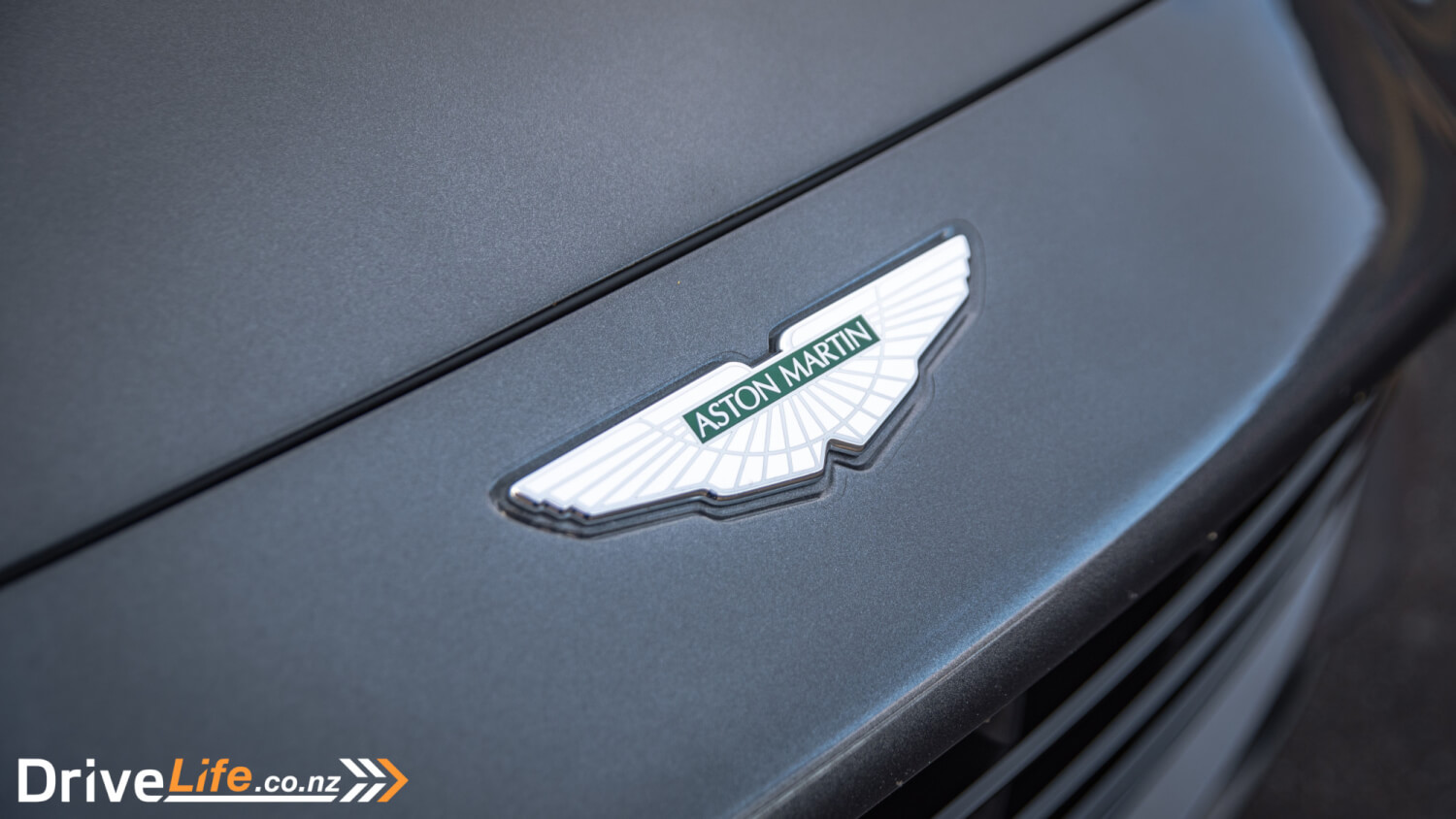
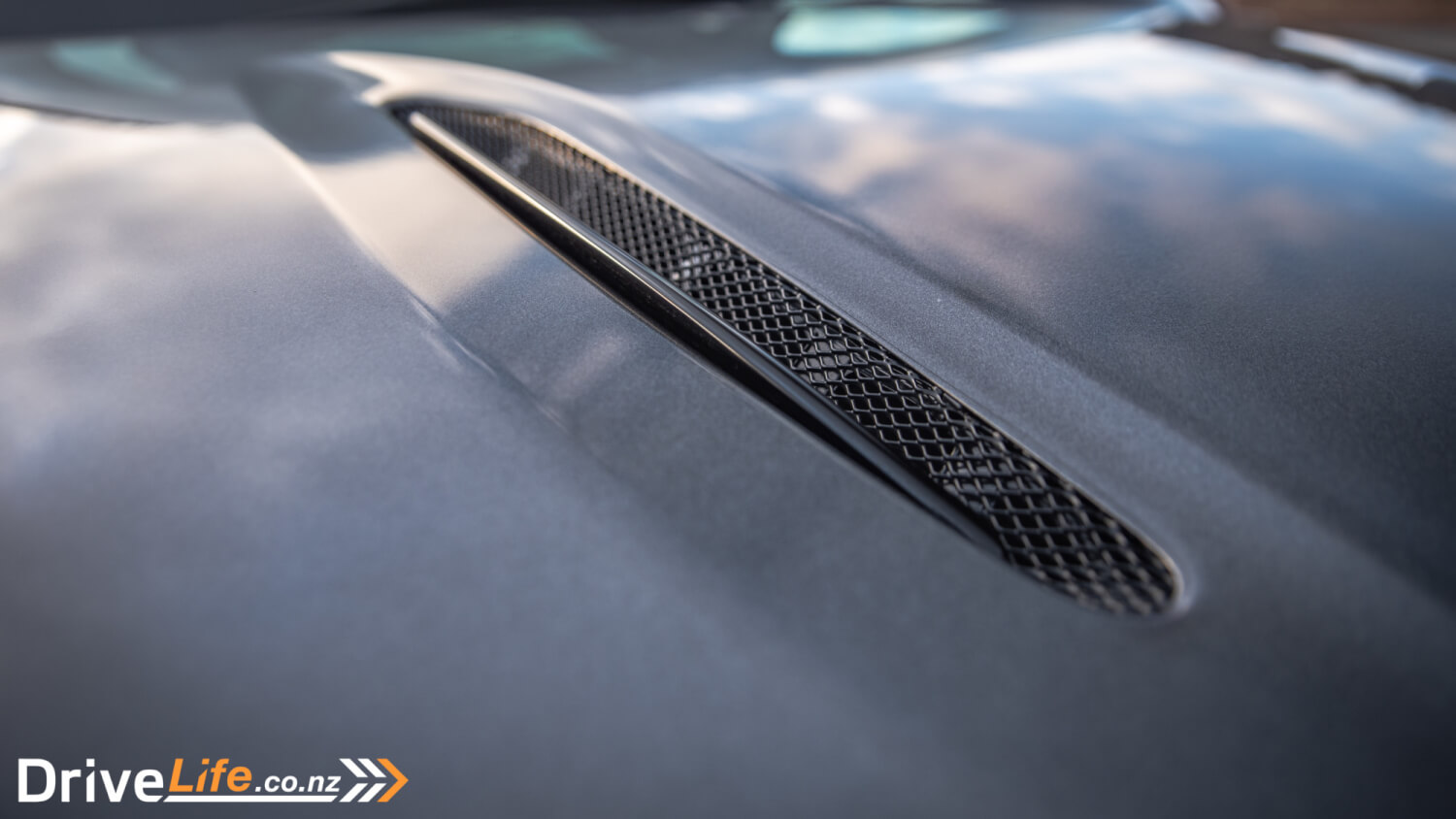
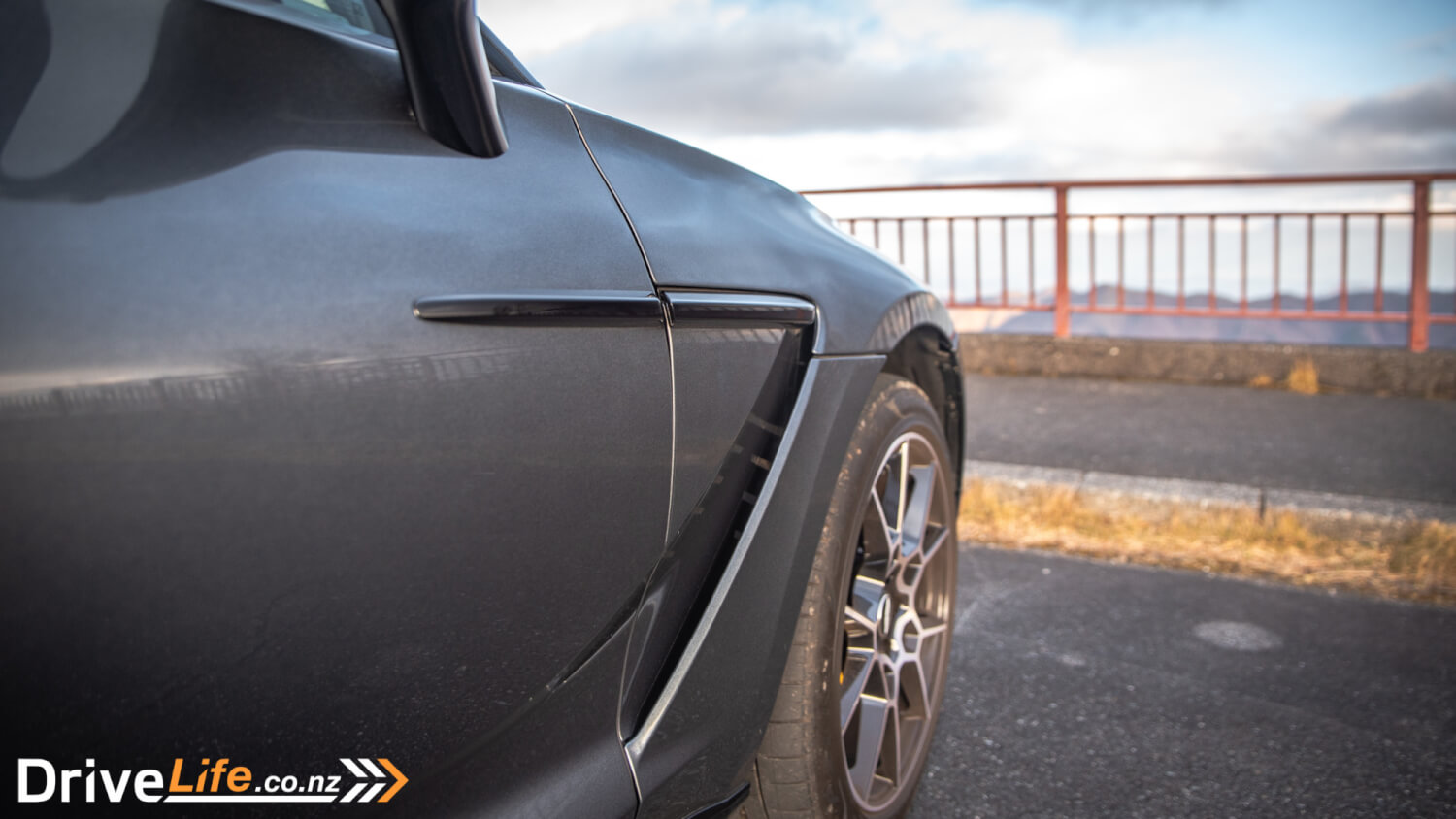
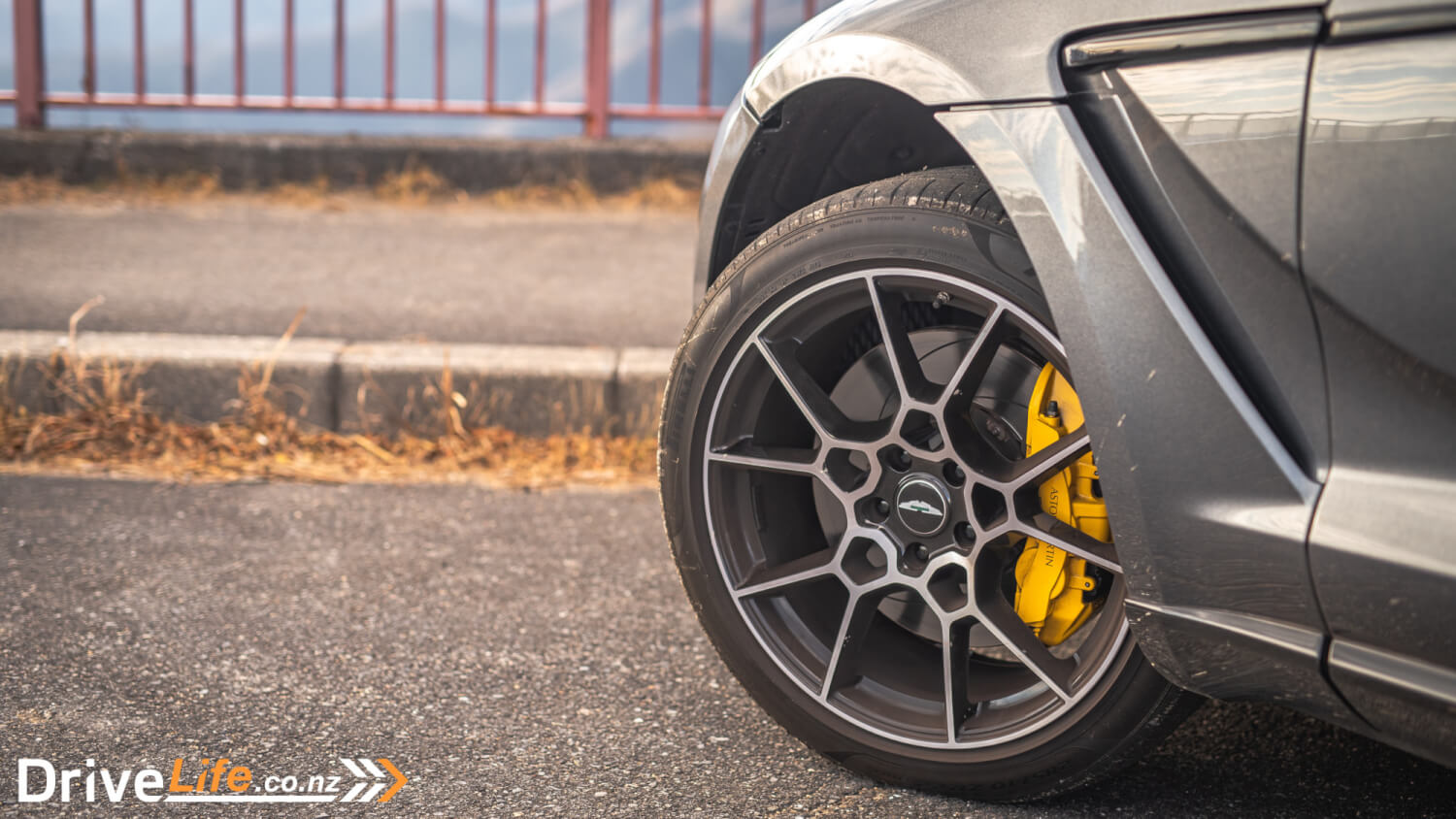
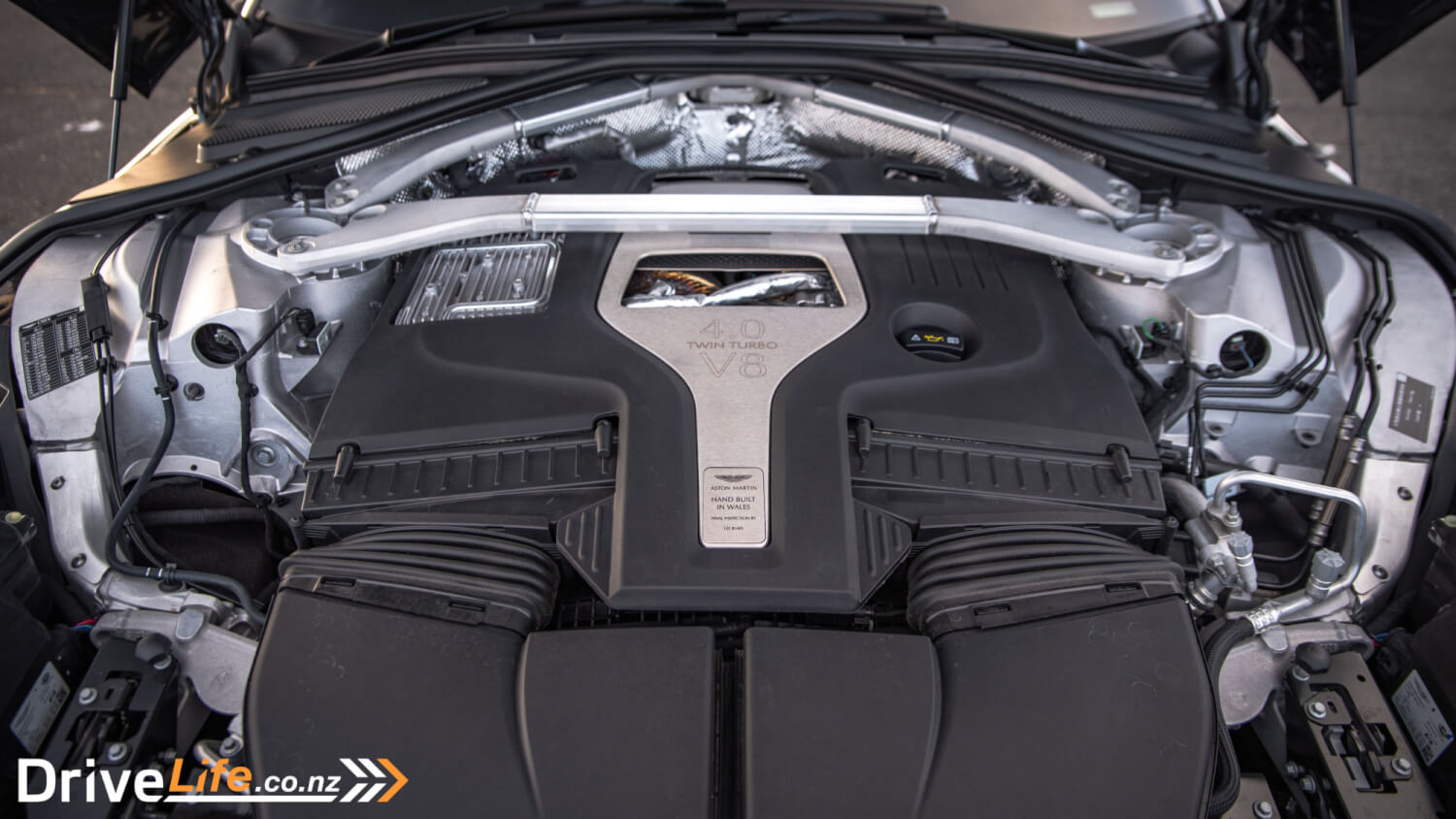
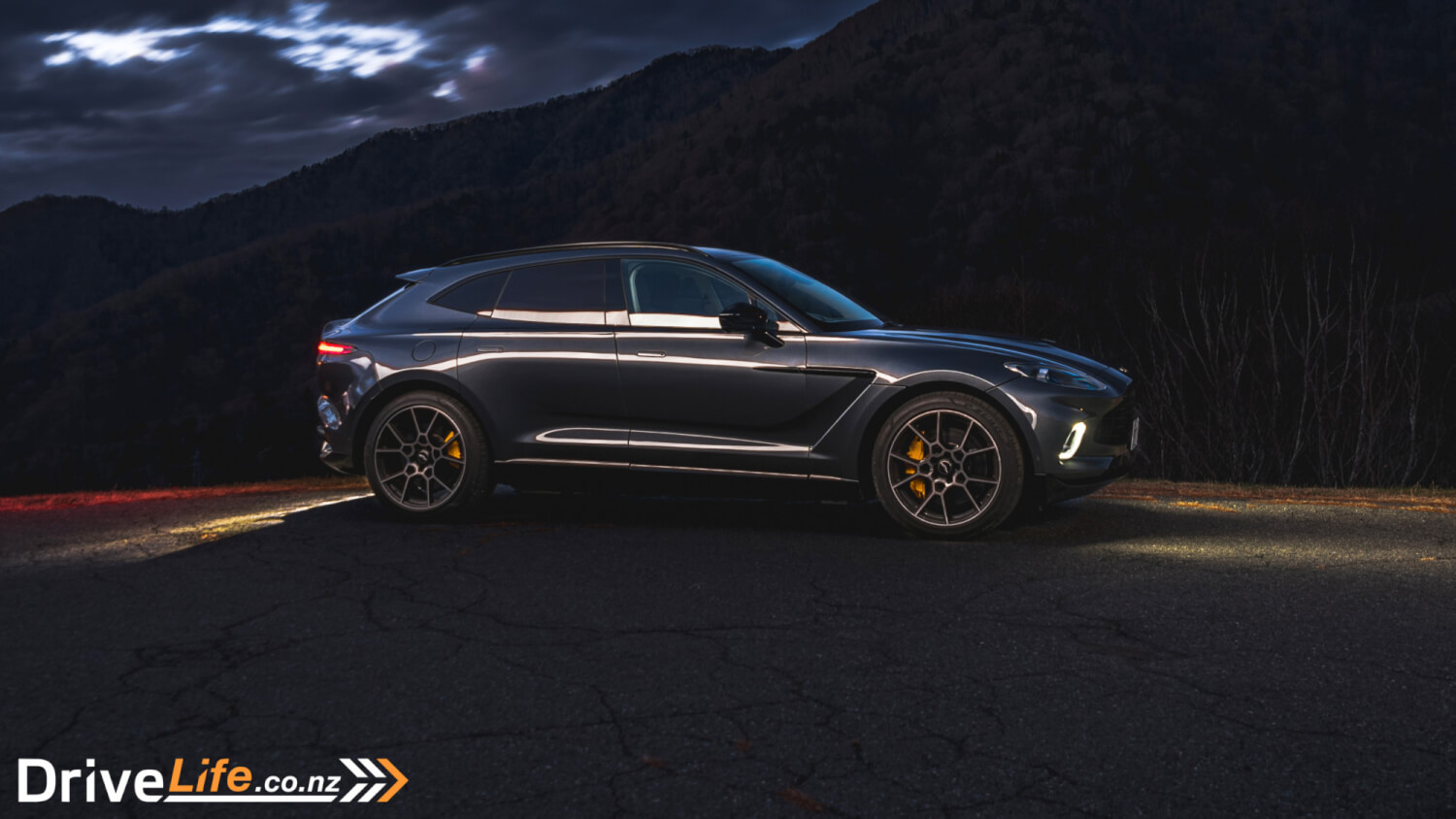
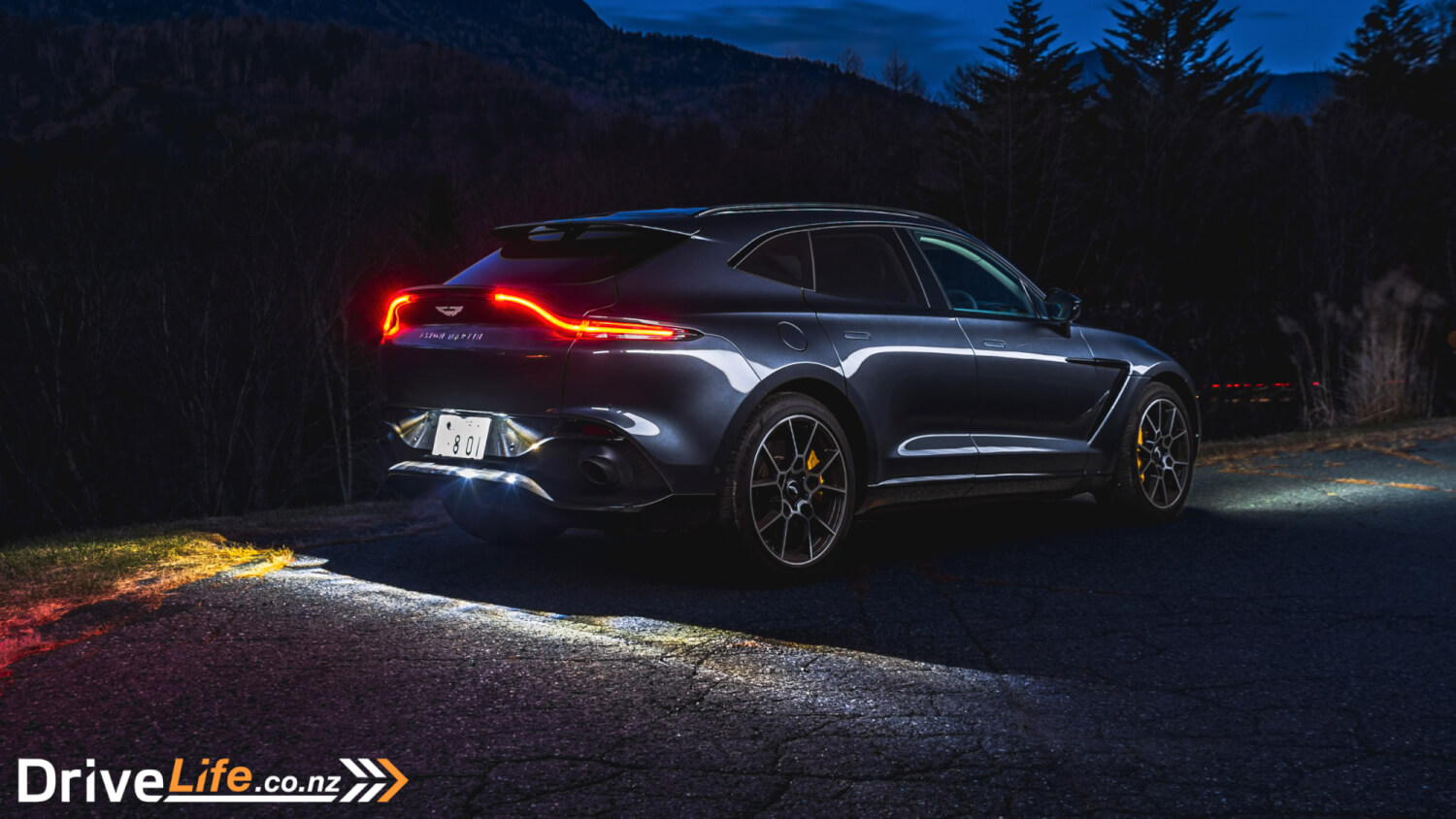






“Much more spacious than Aston Martin’s last four door”. Considering the Rapide is a Sport Coupe based on DB9, that’s like saying a Cayenne is more spacious than a 911!